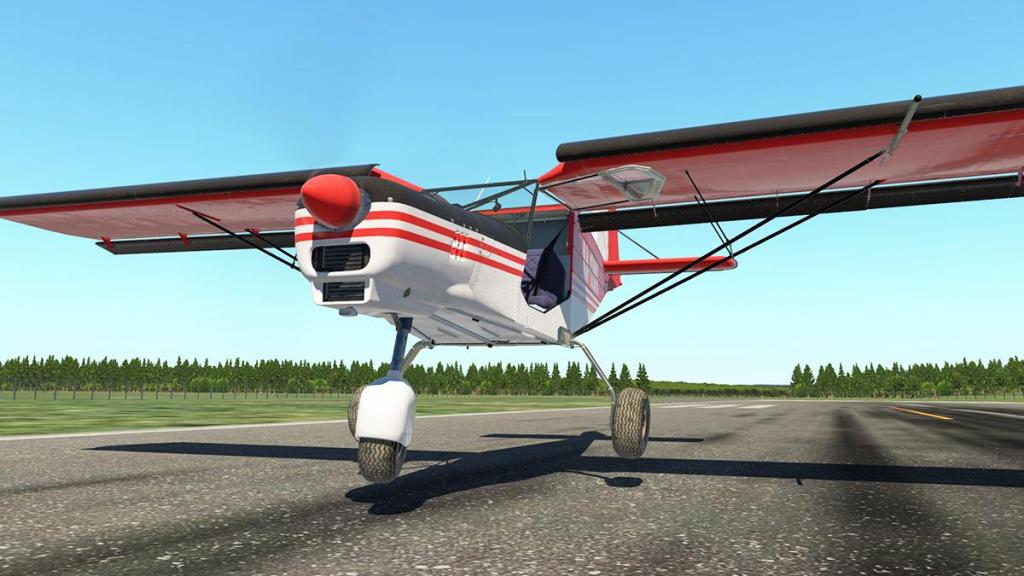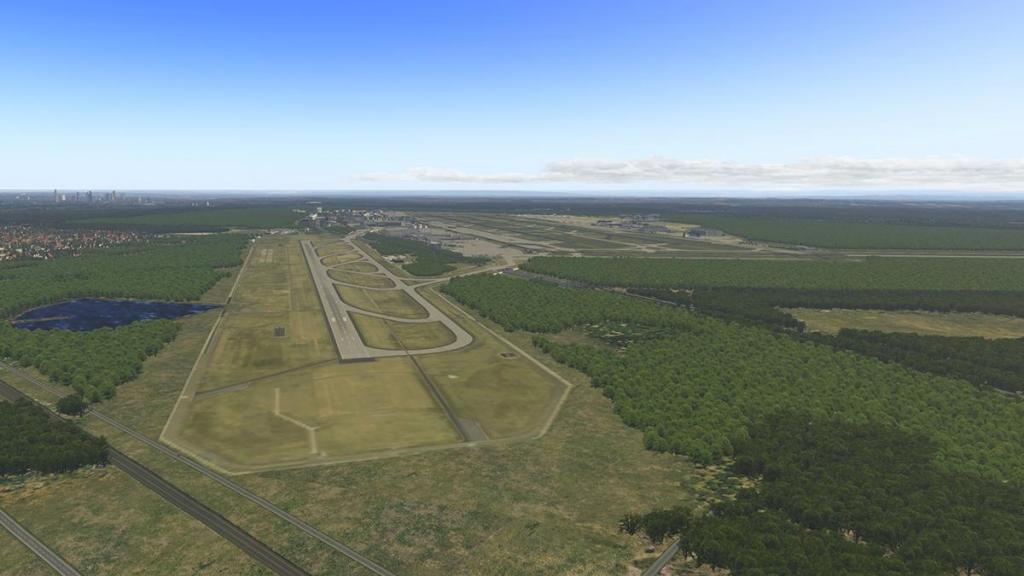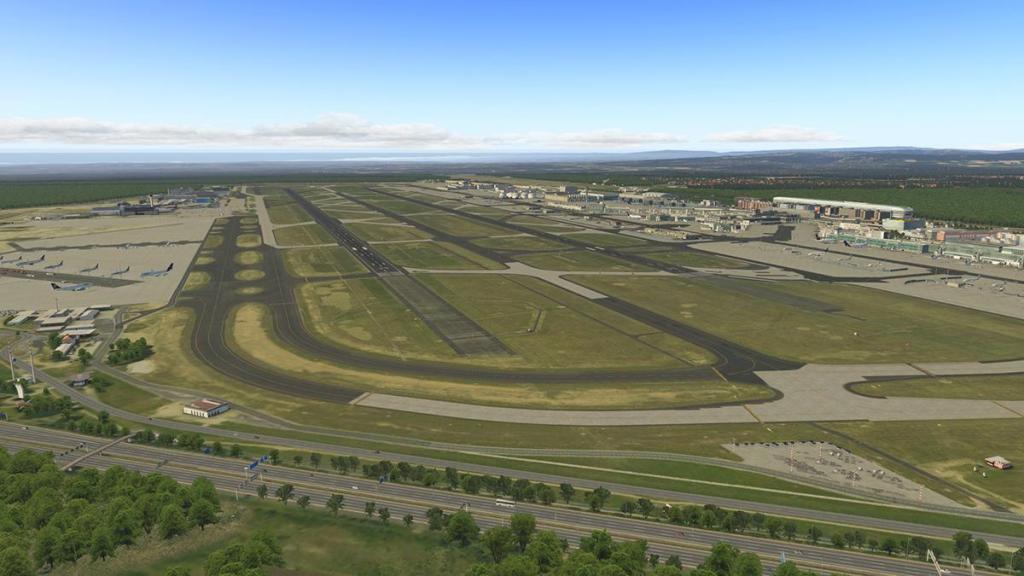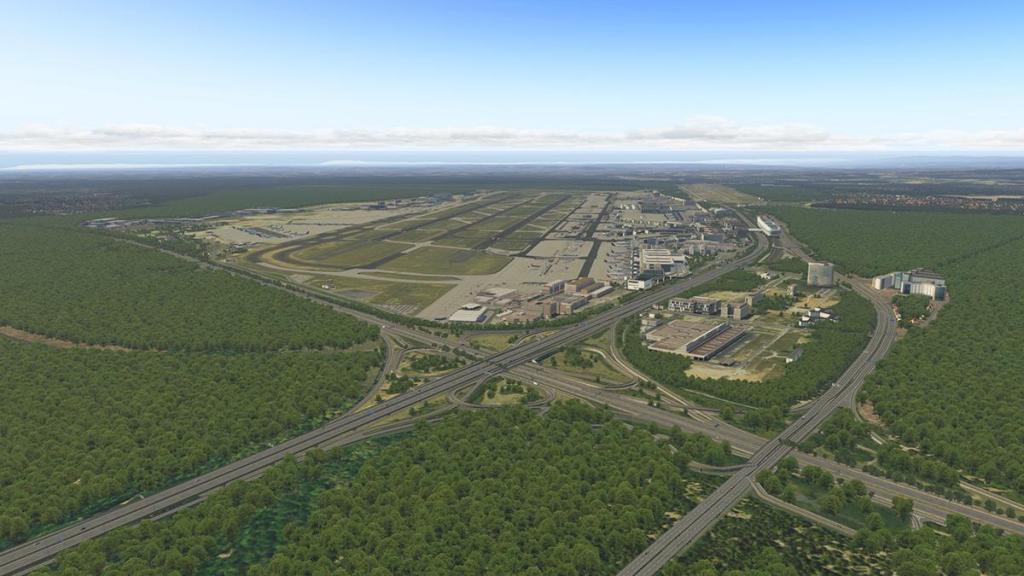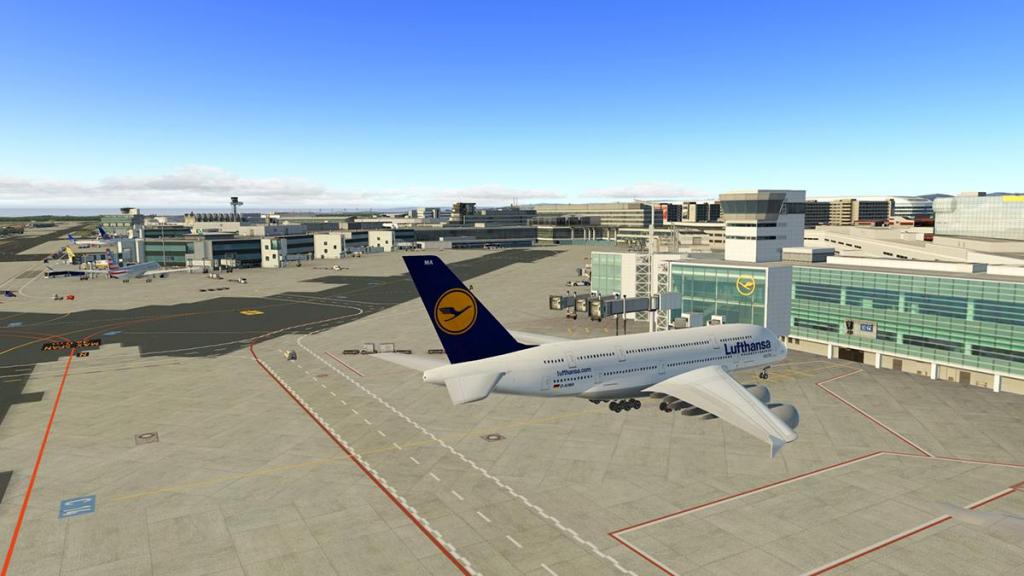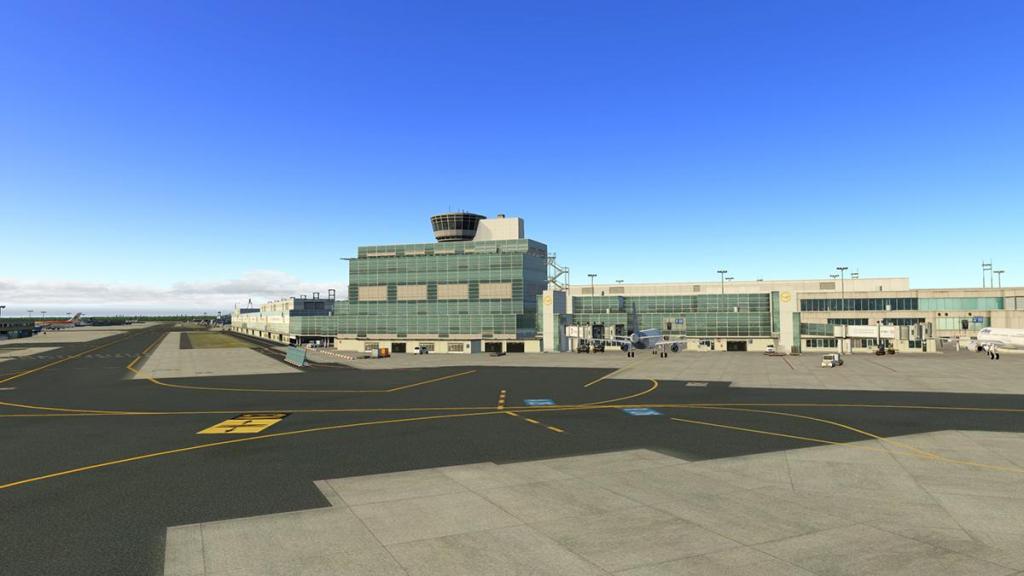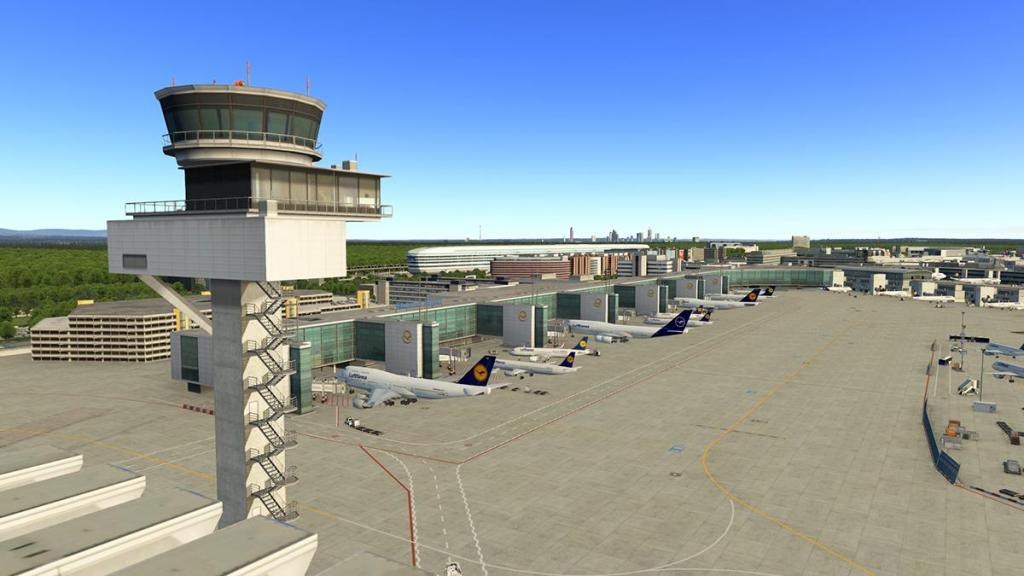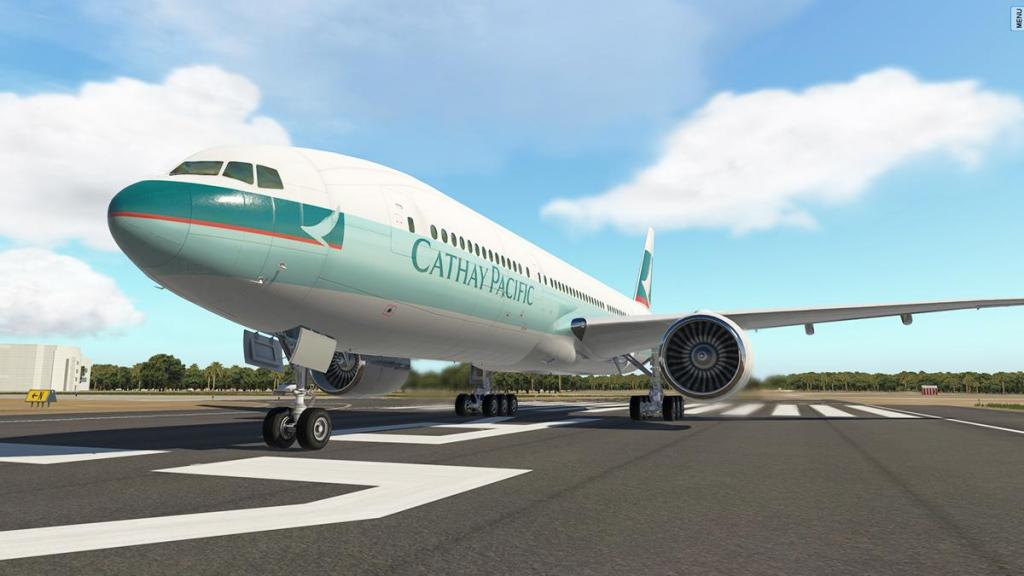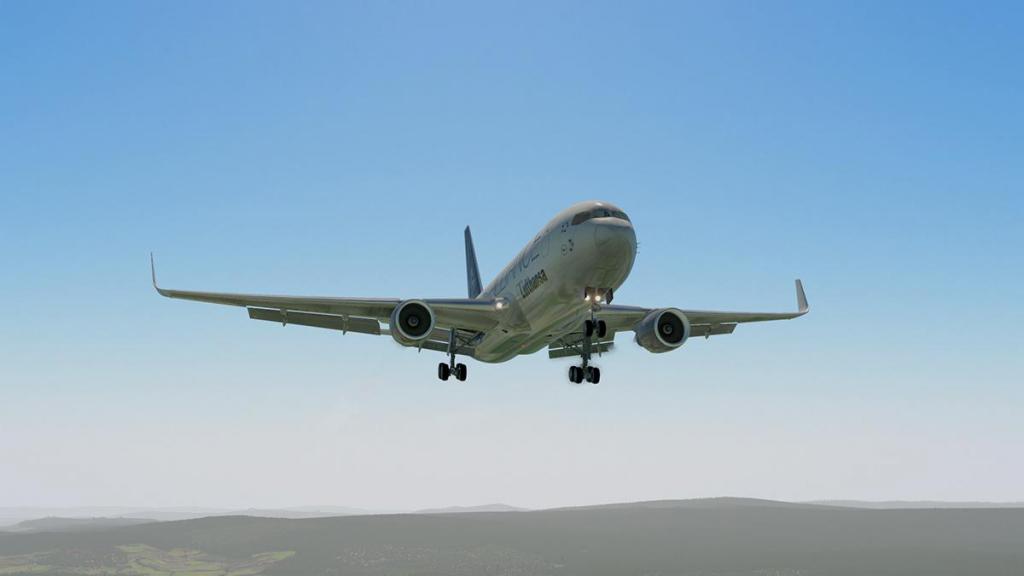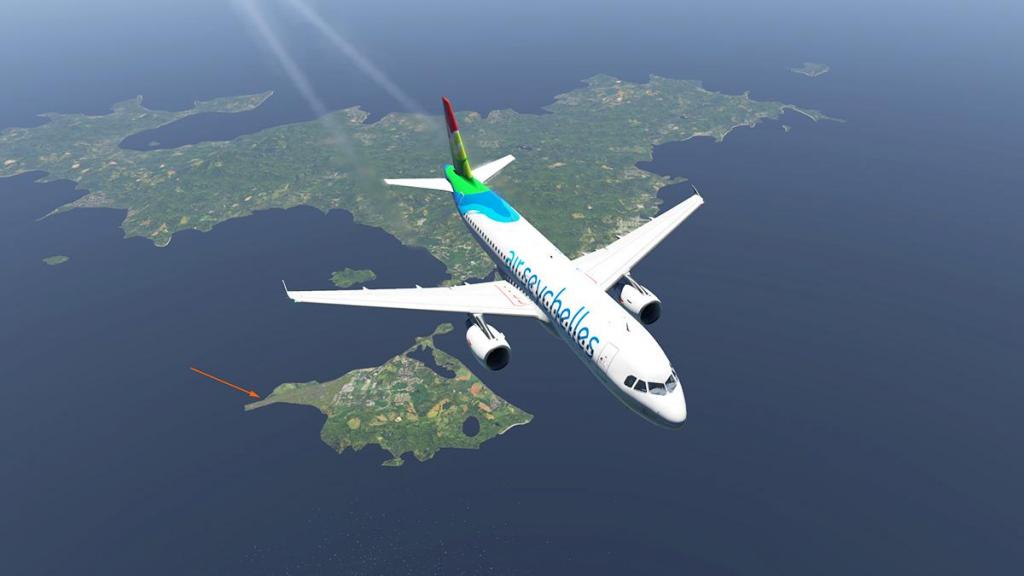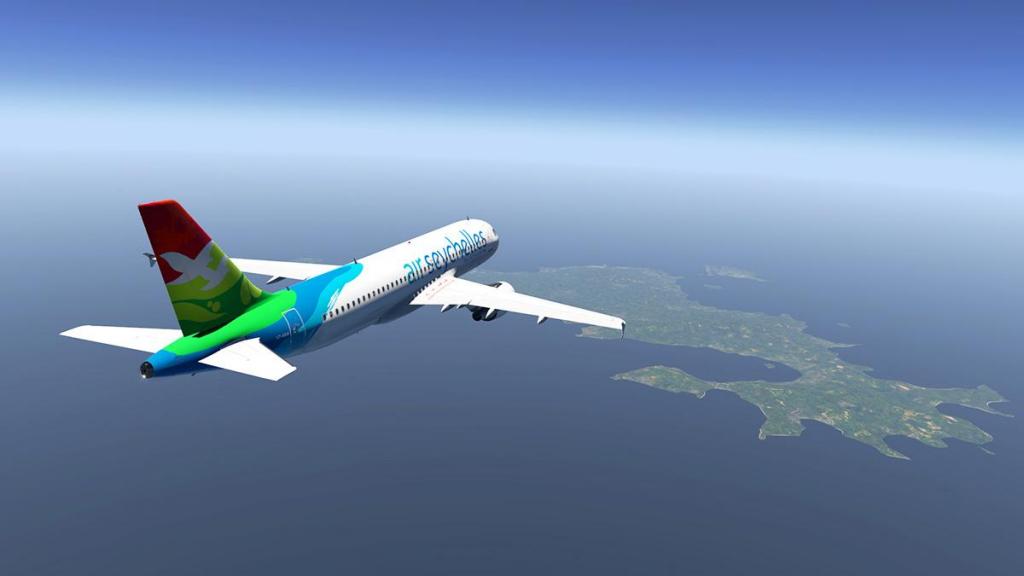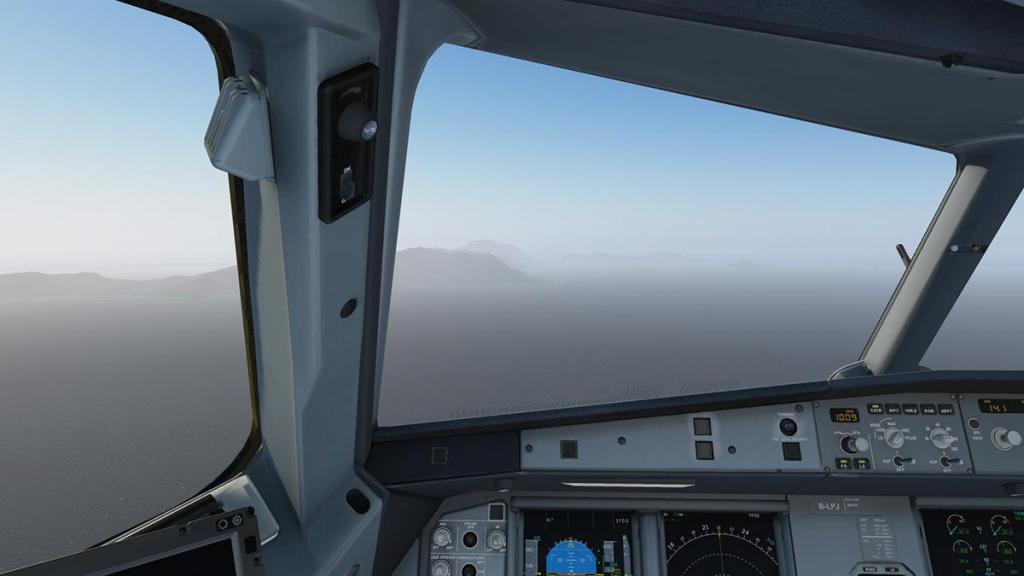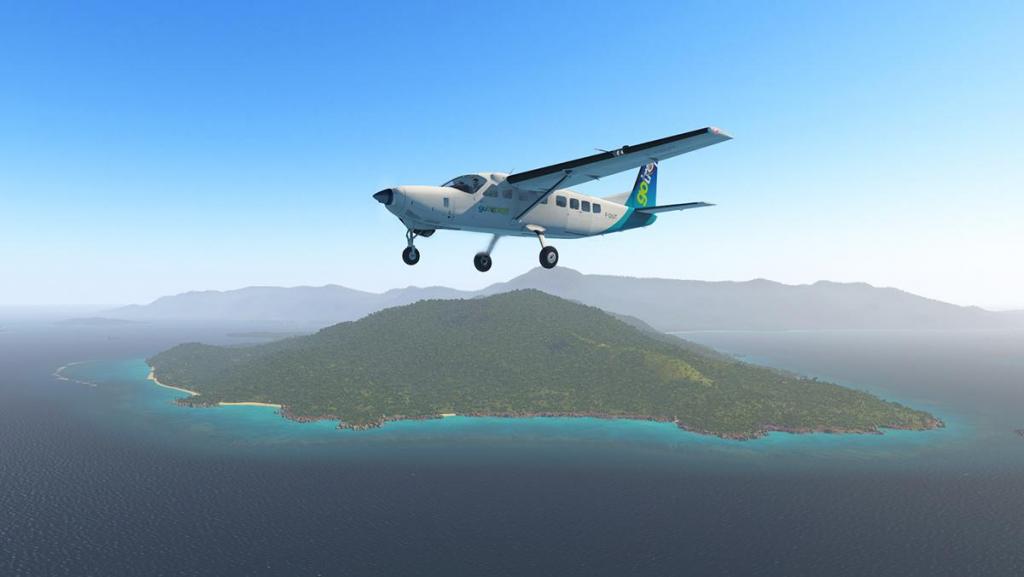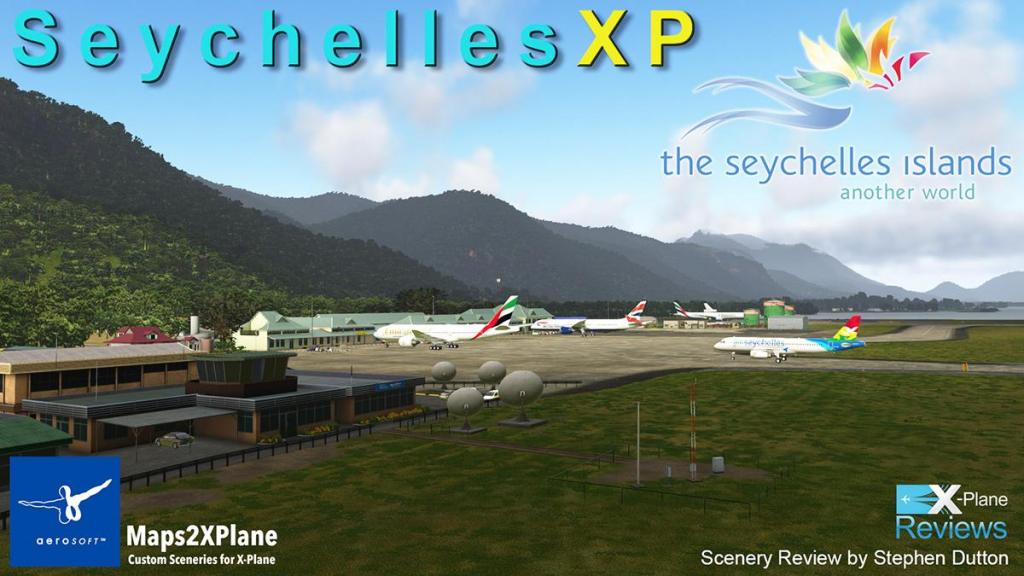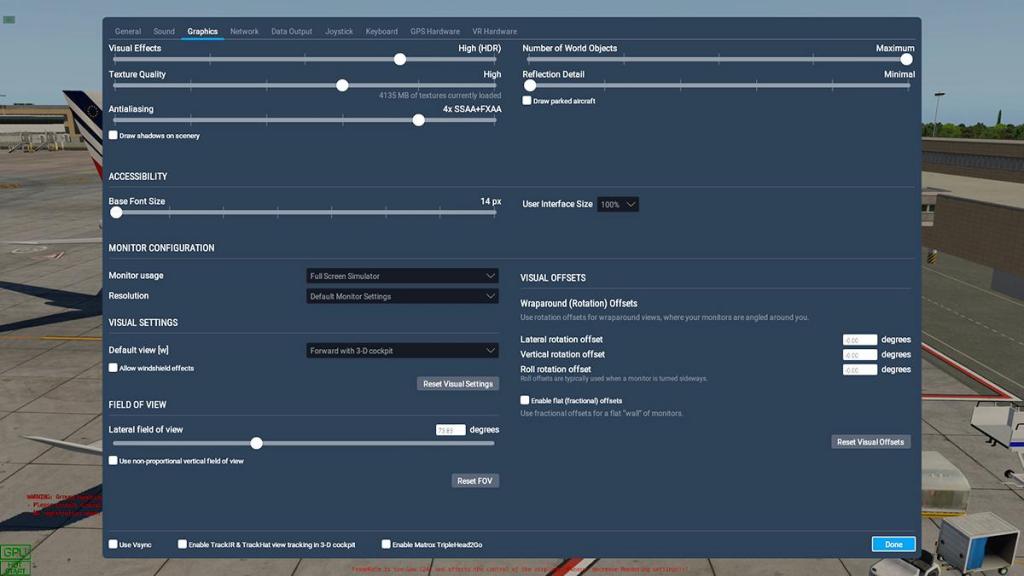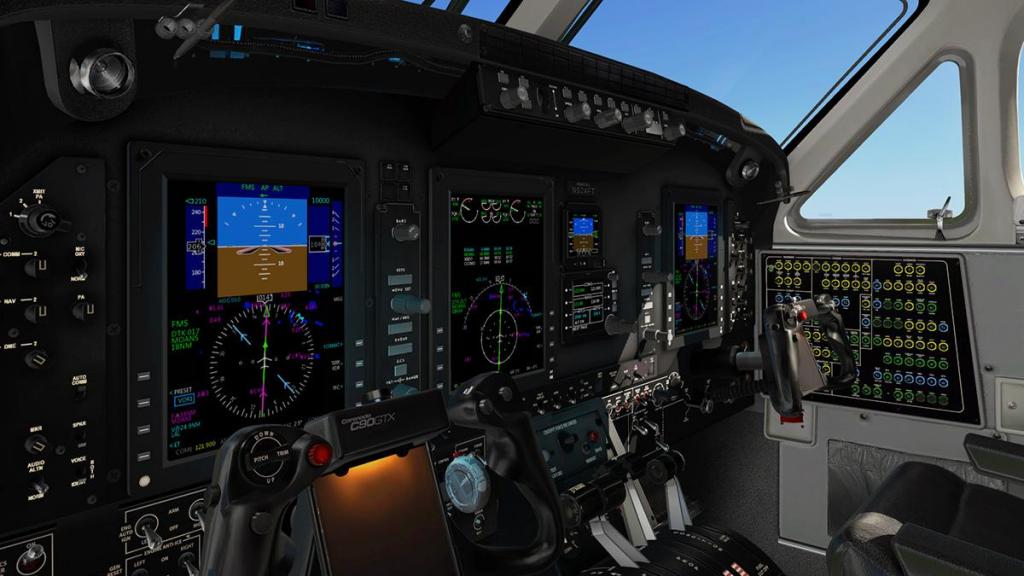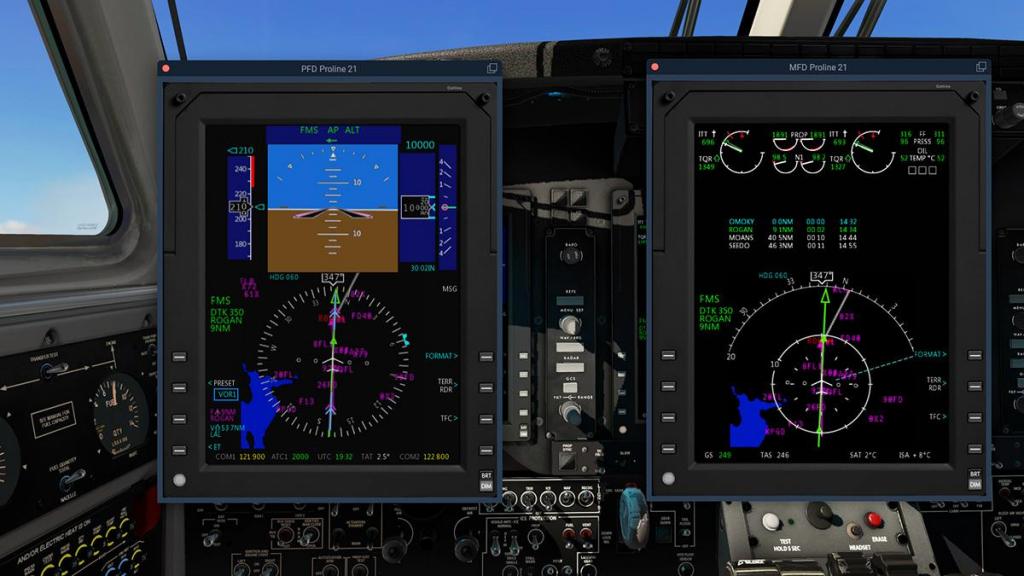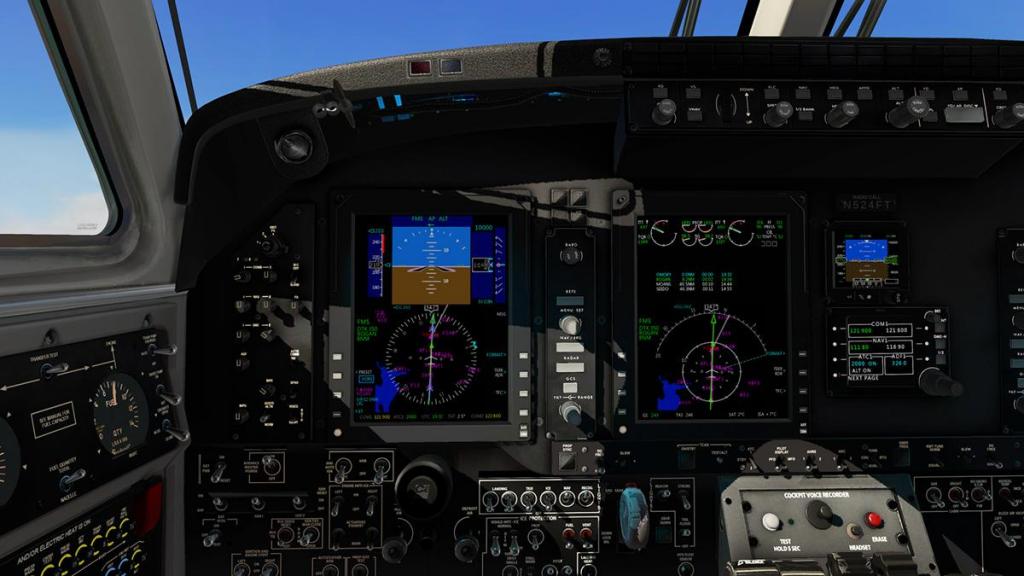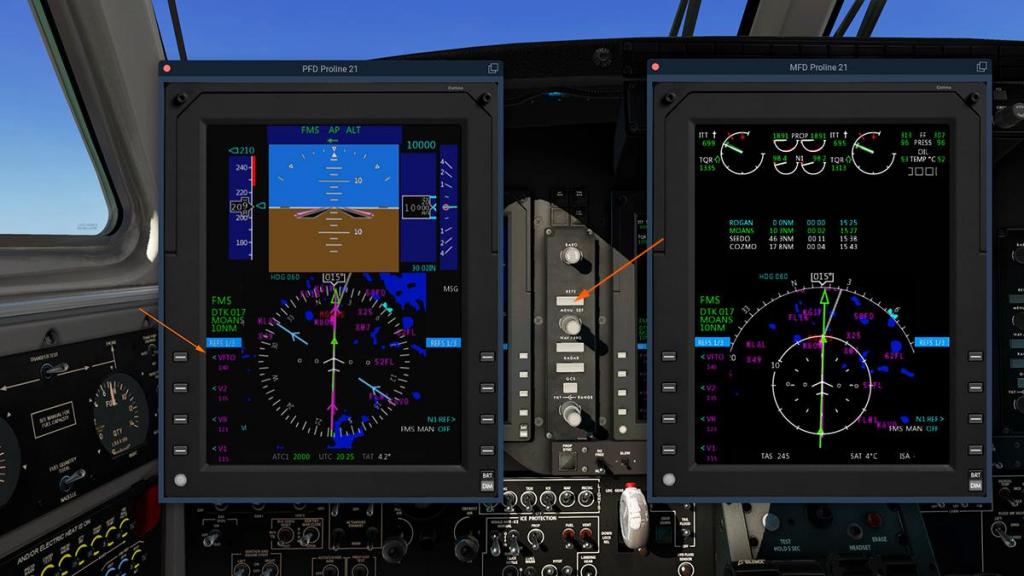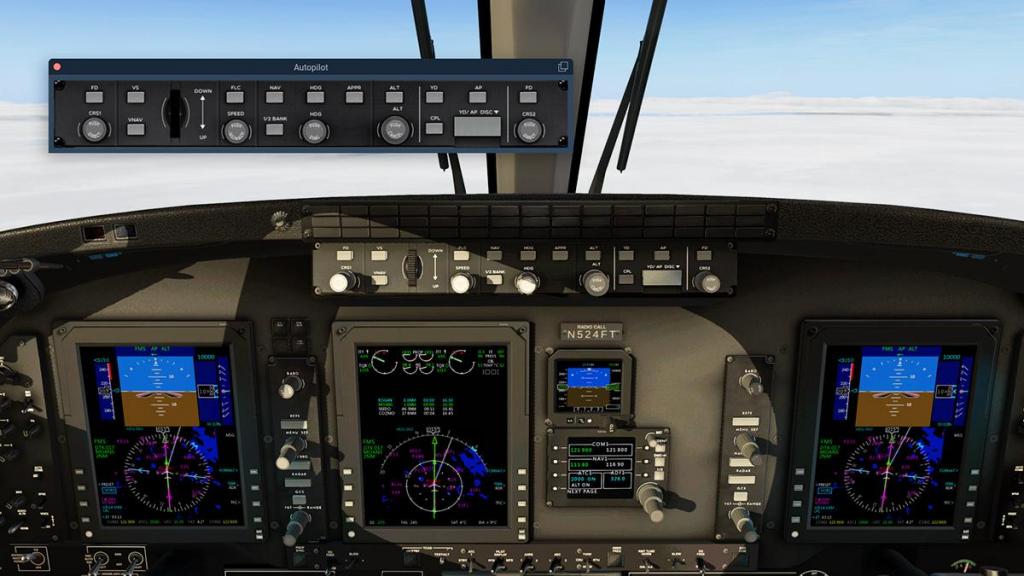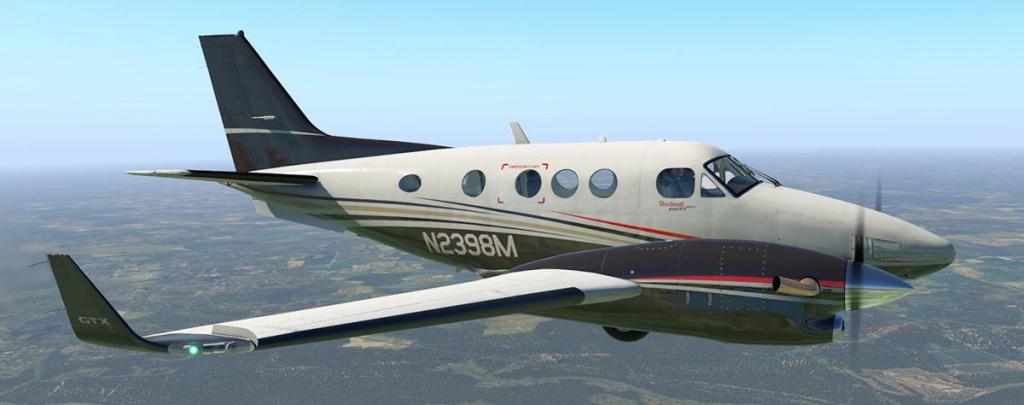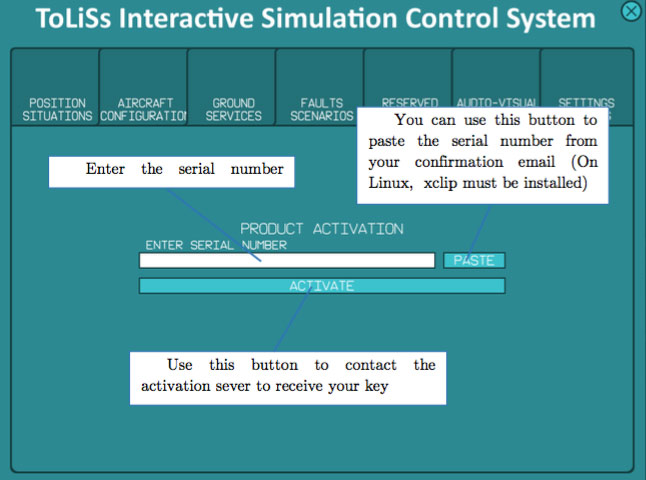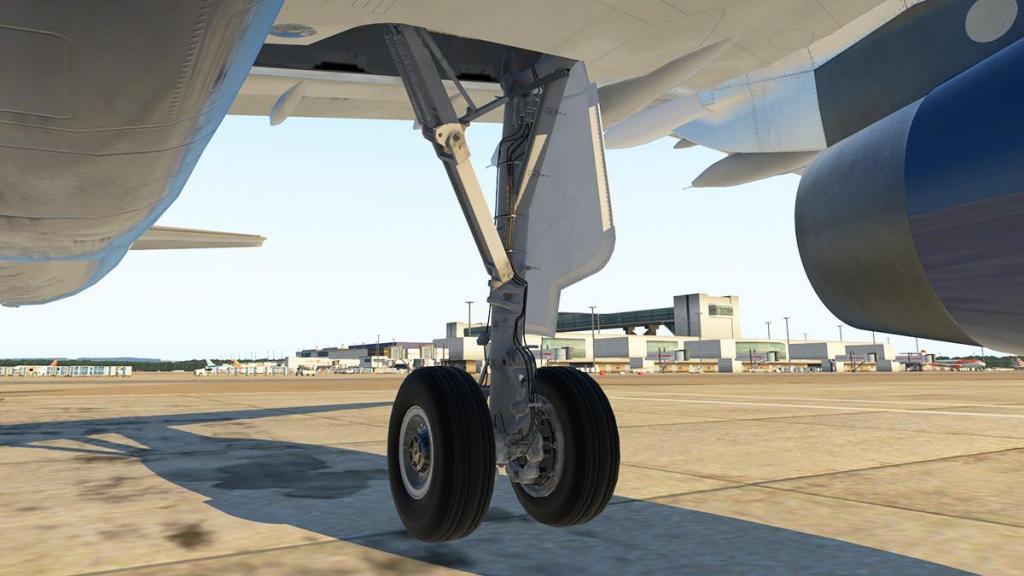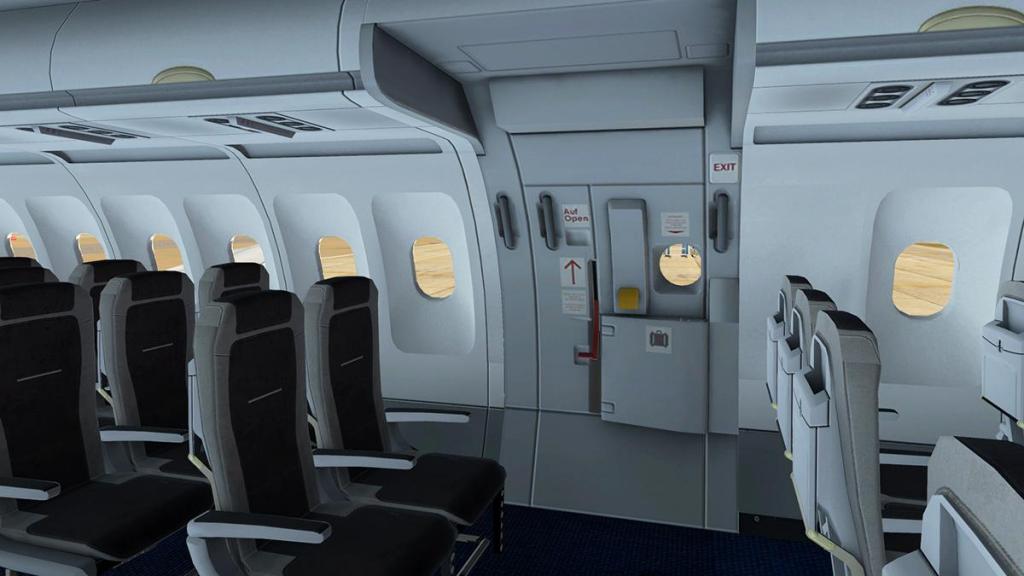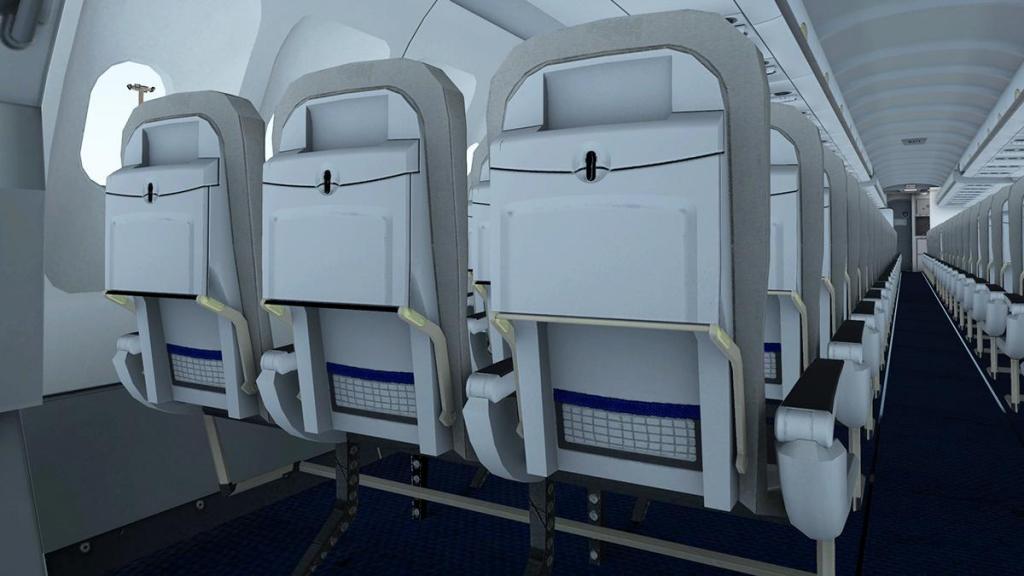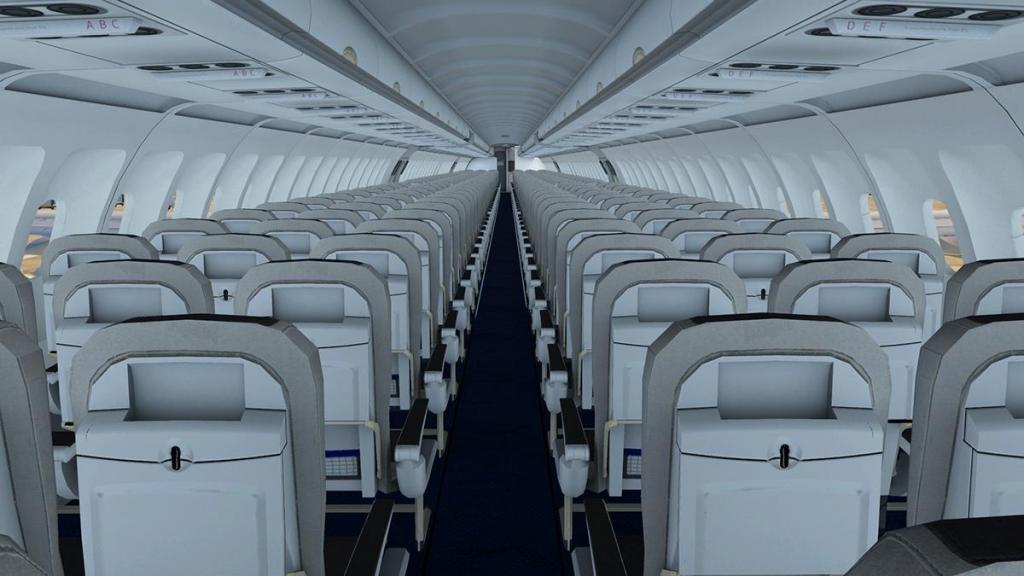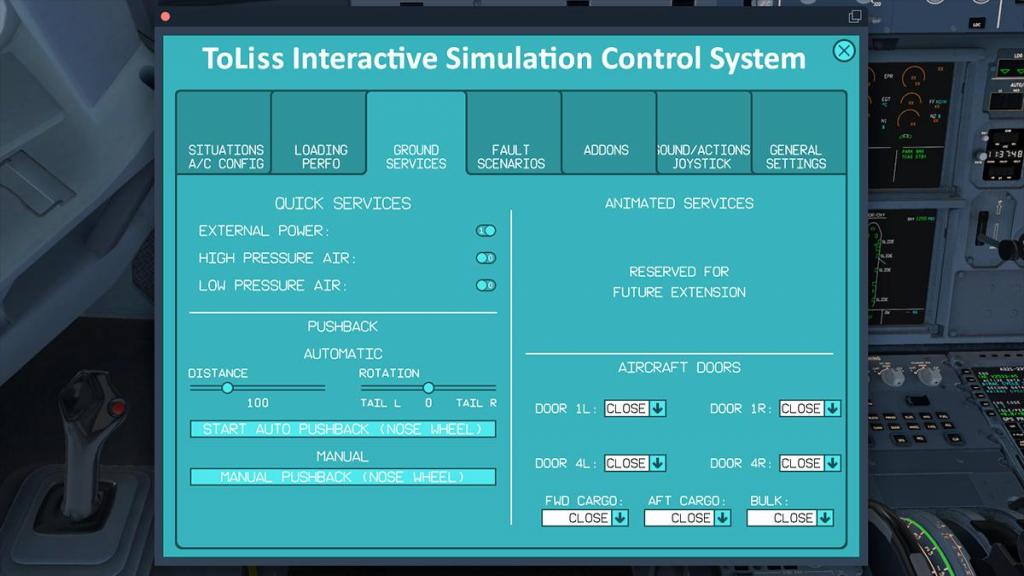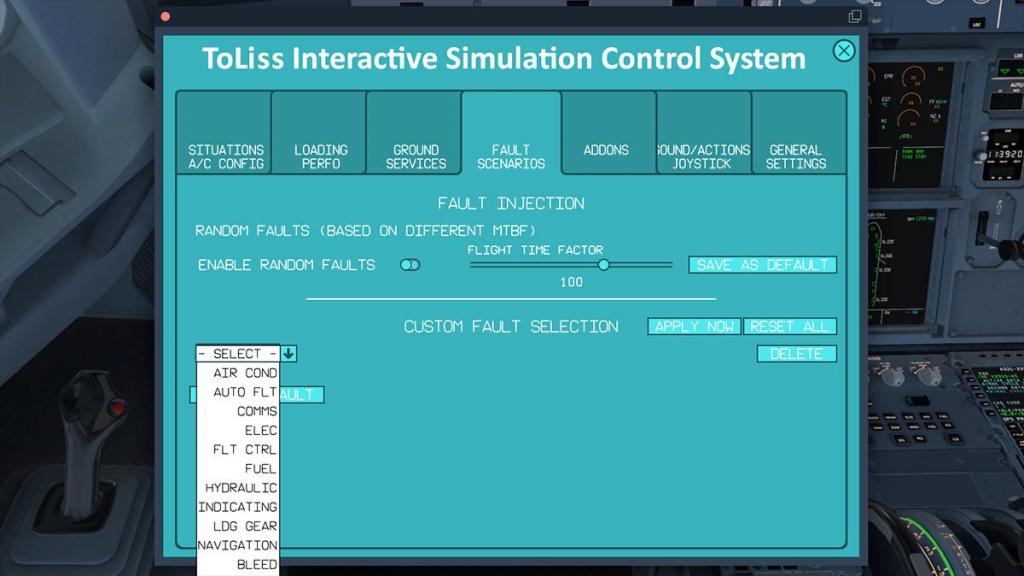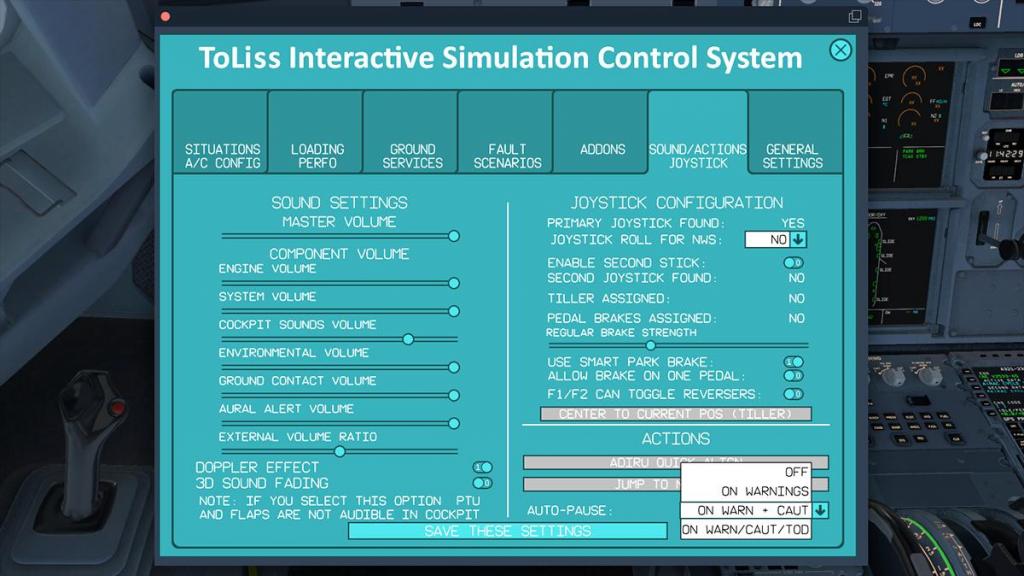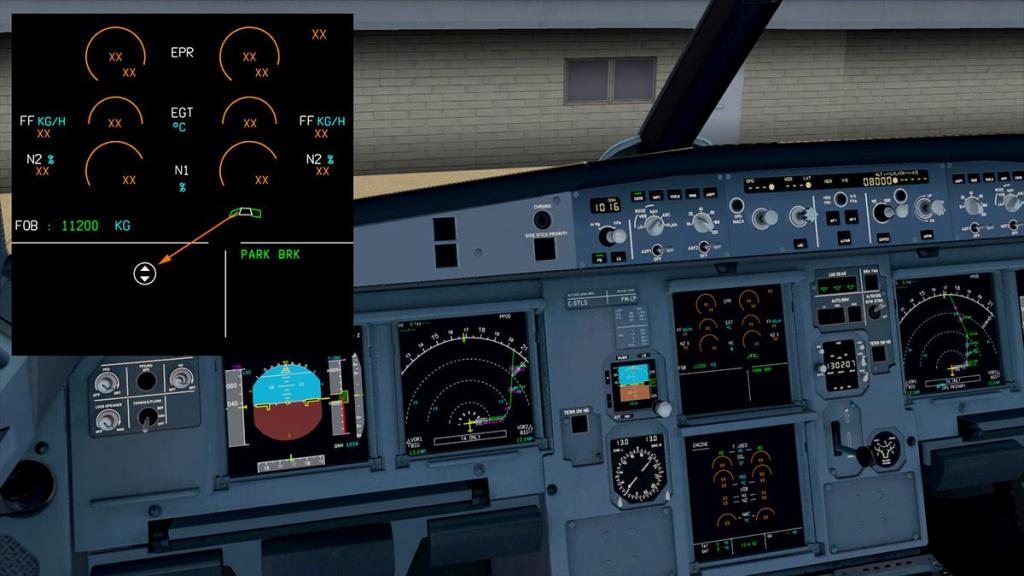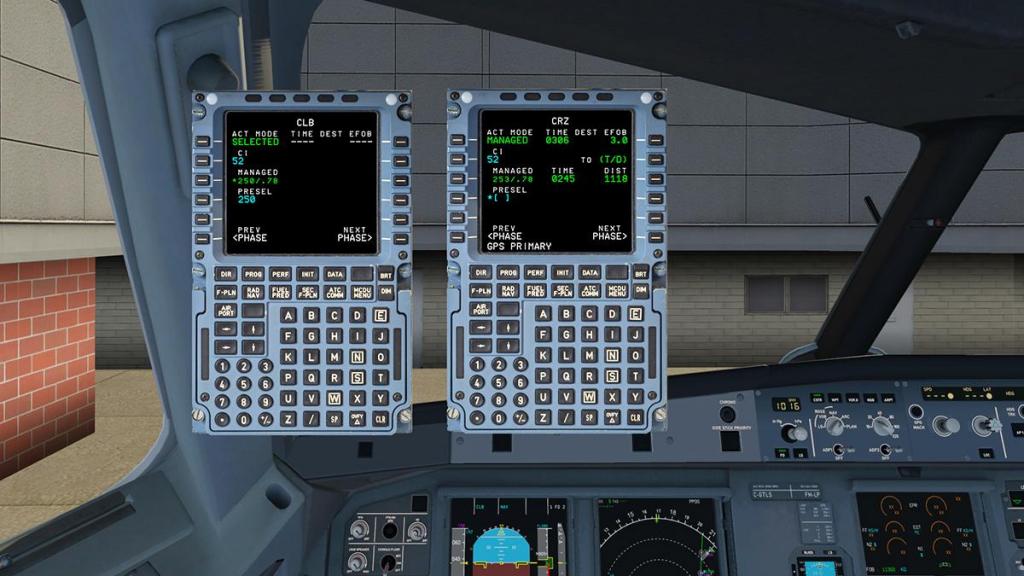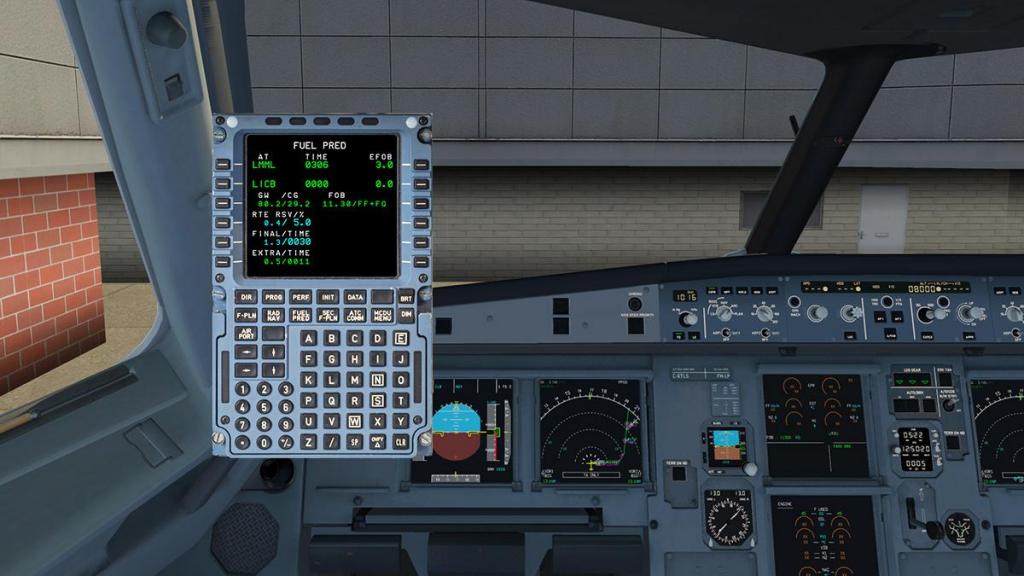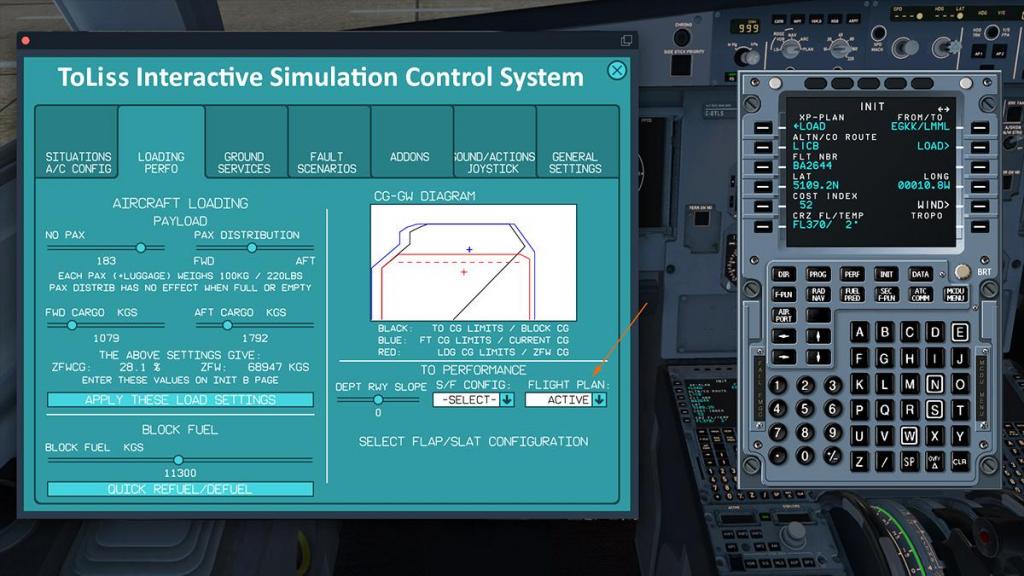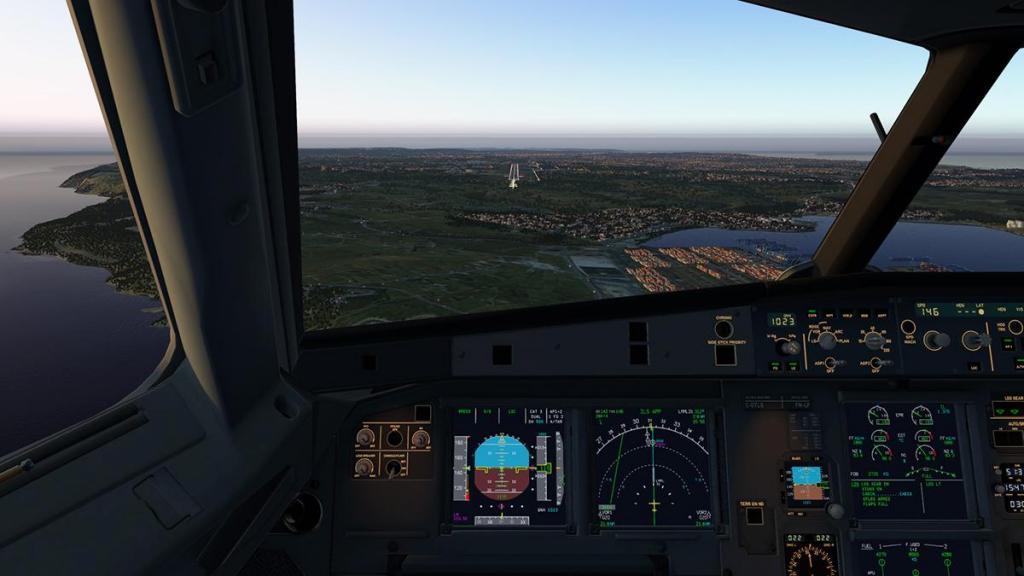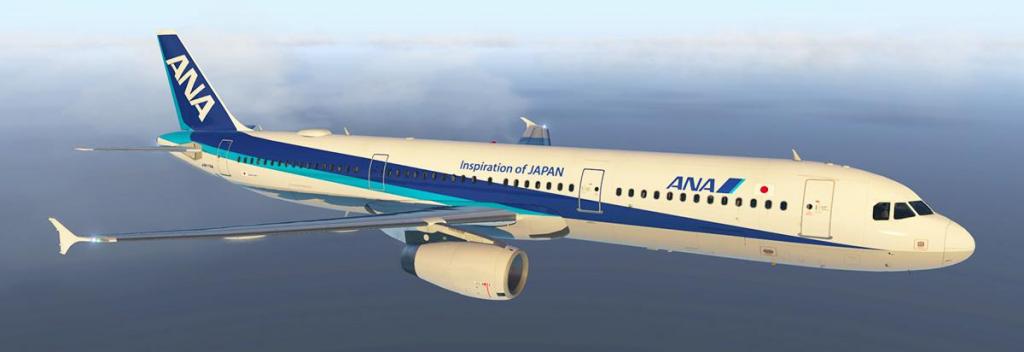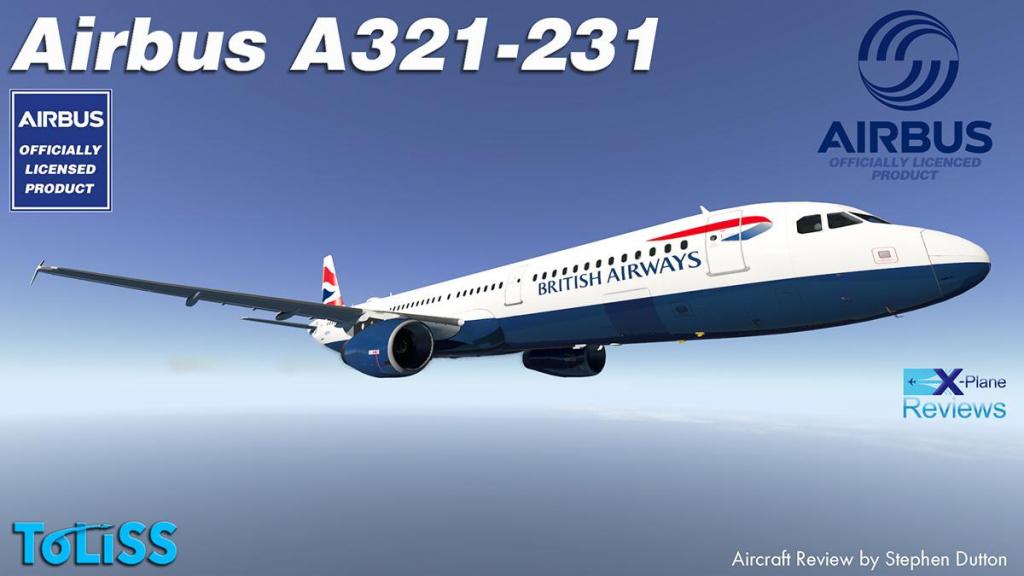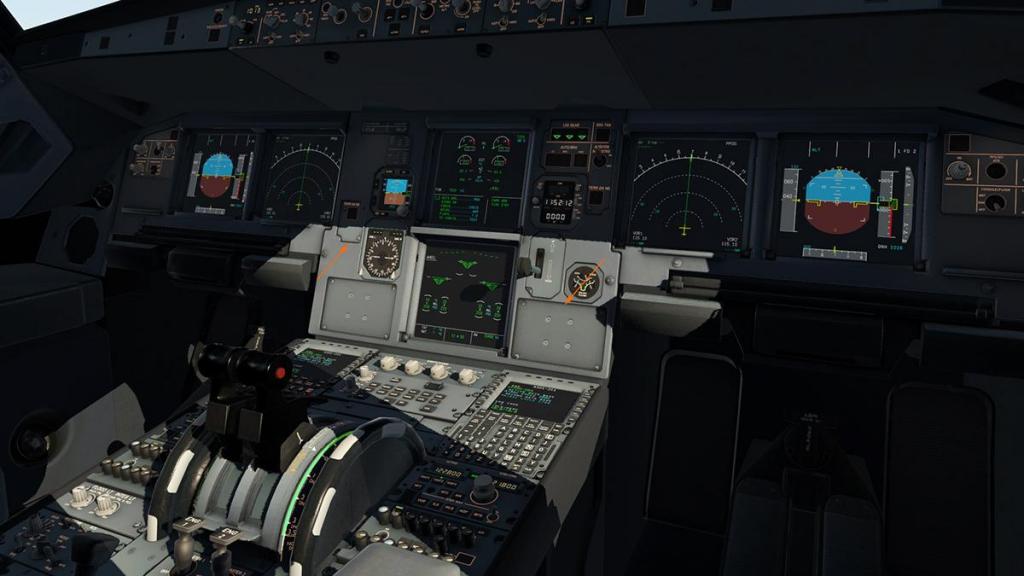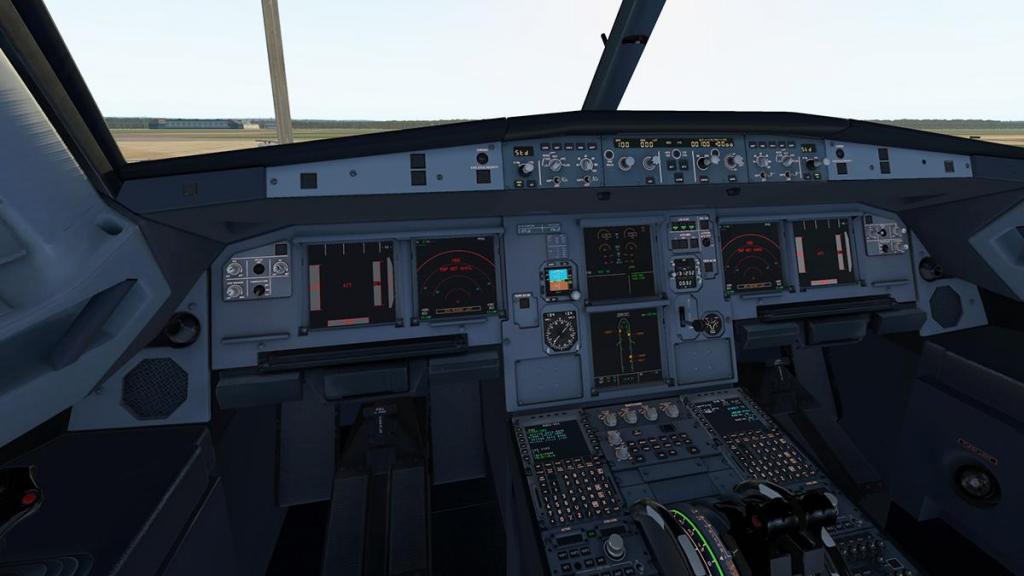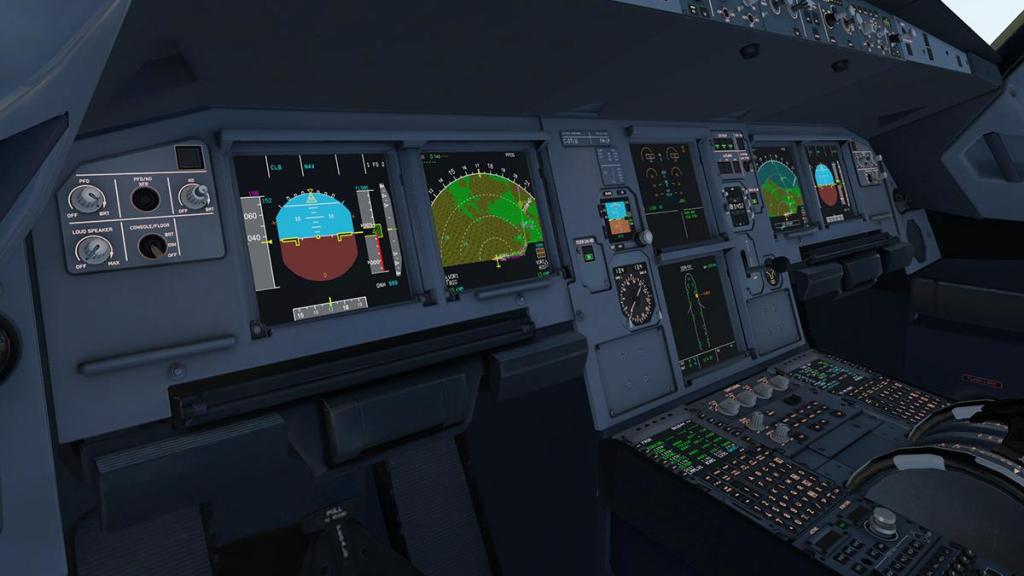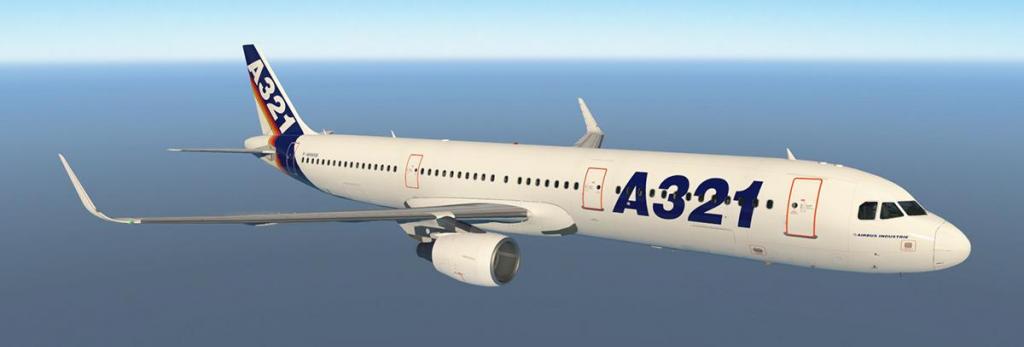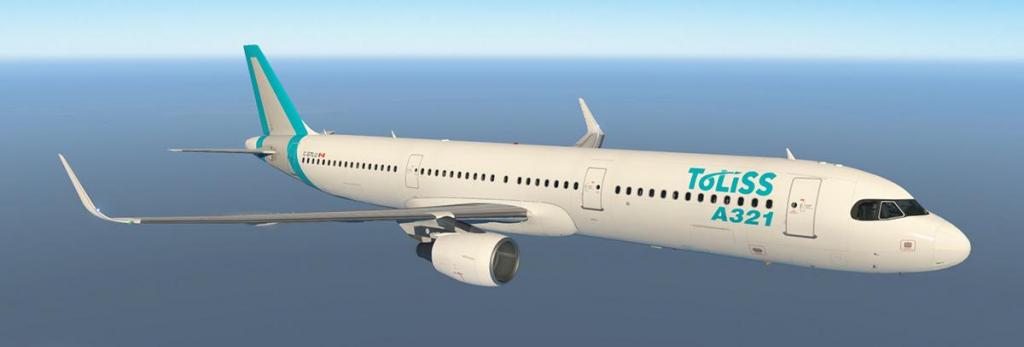-
Posts
2733 -
Joined
-
Last visited
-
Days Won
354
Content Type
Profiles
Forums
Articles
Everything posted by Stephen
-

Plugin Review : WebFMC Pro by Green Arc Studios
Stephen replied to Stephen's topic in X-Plane Plugins and Simulator Addons
If you look you would see!... News! - Update Revised : WebFMC Pro v1.5.3 by Green Arc Studios -
Aircraft Update : Spectr-Aero SP-30 v2.0 by Mad Flight Studios Some aircraft are just plain mad, and that moniker certainly relates to the Spector-Aero SP-30, which is a Russian take on the Zenith STOL CH 701 that is a home-built kit aircraft from Canada. More madness comes from the developer in Mad Flight Studios that takes an already very utility aircraft and fills it up with a feature list as long as your arm, and still throws in a few quirks as well to create a very surreal but very rewarding ultra-light aircraft.... well mad in fact. I personally love the SP-30, as it is a gem to fly but as we found out the quirks can get in the way, but once you sort of figure and understand them, then the SP-30 comes alive. From the release version... Review Aircraft Review : Spectr-Aero SP-30 by Mad Flight Studio there has been one other SP-30 update Spectr-Aero SP-30 v1.2 to fix a lot of those earlier quirky annoyances. Spectr-Aero SP-30 v2.0 So here is the next update to version v2.0. It is not a particularly big update but an important one with a few hidden changes that improve the aircraft. The first big change is to the core of the aircraft and a change up to SASL-3 coding. This change is mostly for the coming Vulkan/Metal API changes, but it is a far better plugin with more features built in. One annoyance (a big one actually) is that the landing gear would break very easily, leaving you with a very broken aircraft and even if you were very careful with it... leave selected on the menu selection of (Plane Condition) "Don't save" and it wouldn't fix itself either? Now you have the ability to install unbreakable gear, so now you can do some harder landings if you wish to and now not break the aircraft, it demands a file change in the plugin folder. Associated is the gear breaking down also on certain sceneries and that annoyance has also been fixed. Librain (by Saso Kiselkov) has also been added... .... the effects here have been really well applied. Front screen and perspex roof are wet, but the side windows which are shielded from the rain via the large wings only have the odd droplets for absolute realism. There is now icing and better fog effects as well. Those lovely instrument needles now flicker and move with great realism... .... but watch that engine temperature, as it has been adjusted closer to the real engine readouts, in other words the Rotax 912 runs hotter. The aircraft dynamics have also been completely overhauled, it was very good before, but you now feel the more tighter inputs that are required... nervy? a good question, but no, but you certainly have to feel and work harder on your inputs... Takeoff now requires more concentration, feed in the power less and control your line more... here it was far harder to stay on the centre line... ... on landing I required more input (note the rudder/front wheel angle), but these change only enhance the dynamic flying aspects and do not certainly ruin an already very good flying machine. __________________ Summary This Spectr-Aero SP-30 v2.0 update is a nice one. Mostly it is focused on the new SASL-3 plugin, but in changing the basic core of the aircraft then the developers have took the advantage to do a few tweaks to refine the SP-30, but to also get it ready for Vulkan/Metal v11.50. Better effects with Rain (Librain), Fog and Icing and better dynamics all help in the cause, and finally in that you can't or don't have to break the undercarriage anymore. The biggest and most beneficial change in this release is actually in the price... the Spectr-Aero SP-30 now priced at only US $34.95 and that is a US $10.00 saving over the release price, a more realistic price? I think so, or are you now getting a great and better value bargain.... I think it is the latter. _______________________________ The Spectr-Aero SP-30 v2.0 update by Mad Flight Studio is NOW available! from the X-Plane.Org Store here : Spectr-Aero SP-30 v2.0 Priced at US$34.95 Previously purchasers of the Mad Flight Studio Spectr-Aero SP-30 can update to v2.0 by going to their X-Plane.OrgStore Account. Main features: Dynamic model, handing characteristics, systems controlled and tested by real world pilots and engineers. Full 3D manual ground service propeller covers Pitot cover parking ties parking chocks control surface check fueling (gasoline and chemicals) fuel drain check outside engine heater chemical works equipment Full 3D manual engine service propeller manual rotation oil level check oil change oil filter change air filter change fuel filter change spark plugs change prop pitch selection (from service menu) a lot of failure repairs (from service menu) IFR flying adaptation GNS transponder slip and turn indicator navigation lights landing light cockpit light Realistic gauge operation Custom radiostation FL-760 (with AUX connection simulation) Custom fuel system Custom oil system Custom engine operation A lot of custom failures Custom shake and G-effect (compatible with TrackIR and view-effect plug-ins) Custom 3D sounds (over 170 real sounds) Custom windshield effects (rain, ice, mist) Custom particle effects Fully VR compatible (without additional plug-ins) High Quality PBR textures High accuracy interior and exterior 3D models High accuracy fully animated aircraft 3D ground service and general options menu Two Language manuals and aircraft menus (Russian/English) Two cockpit languages (Russian/English) Two gauge options (Metric/Imperial) Layered paintkit included Requirements X-Plane 11 (Fully updated) Windows, Mac OSX, Linux 64bit 4GB VRAM minimum - 8GB+ VRAM Recommended Download Size: 1.1Gb Current and Review version: 2.0 (March 12th 2020) Changelog v2.0 Changelog v2.0.txt ______________________________________________________________________ Update Review by Stephen Dutton 20th March 2020 Copyright©2020 : X-Plane Reviews (Disclaimer. All images and text in this preview are the work and property of X-PlaneReviews, no sharing or copy of the content is allowed without consent from the author as per copyright conditions)
-
Scenery Update : EDDF - Airport Frankfurt XP11 v2.0 by Aerosoft Aerosoft have updated their excellent EDDF - Frankfurt XP11 scenery to v2.0. Already an excellent scenery, this update does a couple of nips and tucks to keep the airport totally current and up to date. In the last EDDF update v1.10, the focus was on the installation of the SAM (Scenery Animation Manager) on all gates. But a few didn't work correctly? These were the complicated three airbridge units (A380/B748) on A54 - A58 - A62 - B25 - B46 - C14/C15/C16. Now in v2.0 they work as required. Having all three units working is highly impressive, a nice fix. Added also are the seasonal orthos (SAM2 plugin required) and the missing marshaller at some parking positions that was fixed in v1.21 The P4 taxiway overpass had a few sinking issues (aircraft would bob up and down), but now the surface is smooth right across and correct. The forests surrounding the airfield are now also more denser, but the lines between the custom and default are also more noticeable as well.. The complicated N3 taxiway markings have been fixed.... still complicated though? Finally there has been some ortho color corrections for the airport to blend in better. Overall this v2.0 (a full version number is really wasted here on the few changes) of EDDF - Frankfurt is a nice set of fixes to keep the scenery front and centre of your routings. Yes I use EDDF a lot, love this scenery and it is one of the best currently for Germany along with ShortFinal's EDDM - Munich Full detailed original release review for this scenery is here: Scenery Review : EDDF - Aerosoft Airport Frankfurt XP11 ______________________________________________________________________ Yes! the EDDF - Airport Frankfurt XP11 v2.0 by Aerosoft is Available now from the X-Plane.Org Store here : Airport Frankfurt XP11 v2.0 Your Price is US$32.99 If you already have purchased the Airport Frankfurt XP11 scenery, then go to your X-Plane.OrgStore to update to version v2.0 Requirement: X-Plane 11 Windows, Mac or Linux 4GB VRAM Minimum. 8GB_ VRAM Recommended Current and Review version: 2.0 (March 11th 2020) Changelog EDDF v2.0.txt ________________________________________ (Disclaimer. All images and text in this review are the work and property of X-PlaneReviews, no sharing or copy of the content is allowed without consent from the author as per copyright conditions) News by Stephen Dutton 19th March 2020 Copyright©2020: X-Plane Reviews
-

Problema de acionamento
Stephen replied to Mario Campos's topic in Aircraft and Scenery Releases and Developer Annoucements
Conversion... Dear, Heeeelllllppppp !!!!, I recently acquired the Embraer E195 V 2.4 version, I perform all the procedures and when I am going to start the engines in the alloy. Has anyone had the same problem ?. Could someone help me. Thank you, I'll wait. I can't understand the question? -

Aircraft Review : Airbus A330-243 by JARDesign
Stephen replied to Stephen's topic in Airliners Reviews
4K graphic cards are really minimum now, but a 8K GTX 1070 is fine (I use an 8K, but would love a 12K), 8gb of RAM is again too low, you would need at least 16gb (I use 32gb) but 16gb is fine, it is cheap now anyway. If you are porting an external GPU, then make sure your busses can handle the speeds, no good on adding on all that power if the boards can't process it? With these numbers you can pretty well run anything with a large margin but the SSG B748 🙂 -
I like the JARDesign A320, but it only uses the basic X-Plane flight dynamics, were as the QPAC, FF320U and ToLiSS aircraft all have the correct Airbus flight control laws and protection systems and the performance details are directly from Airbus. I always found the takeoff modes in the JD A320 were always very dodgy, and not very authentic, but not to takeaway the significance of the aircraft for X-Plane users.
-
Aircraft updates : Boeing 767 and 757 (C32) by FlightFactor FlightFactor have updated both their Boeing 757 Professional (v2.4.3) and their Boeing 767 Professional (v2.3.7) series aircraft. 90% of the version changes here are related to both the aircraft versions, but the Boeing 757 Professional has an extra at no cost in the Extended and Global packages. This extra is the C-32 Variant that is otherwise known as Air Force Two, or the American Vice-President's personal aircraft. As the update changes are nearly exactly the same between both the aircraft we will focus on the B757 Professional version. C-32 Variant There are actually four C-32 aircraft in this Air Force Two configuration and they are all operated by the 1st Airlift Squadron of the 89th Airlift Wing. They are available for use by the vice-president (using call sign Air Force Two), the first lady and members of the cabinet and congress. They are also used by the President (using call sign Air Force One) if the destination is too small to take the larger VC-25. I'm not going to deny, but the Boeing 757 looks great in the Presidential colours, although the aircraft was built in 1998, it still has that impact statement you need as a head of government. The Air Force Two livery is however not new to the FlightFactor B757, we have had it now since the first release, but somehow it looks far better here with the new PBR enhancements. Even if the external livery is really the same, the difference with this release update is the new internal layout, gone is the all the mass seating 757 arrangements... and incoming is the custom Presidential aircraft layout. Forward to the rear and the first forward cabin section has six wide executive seats for White house aids and staff. There is nothing behind the curtain, but my guess it is for carry on luggage. A compartment within the cabin creates the flying official office... it is terribly messy in here as well, so there must be something big going on... a worldwide pandemic that could kill millions of people maybe? nah, that scenario is simply just too far fetched! I love the couch though, and what a way to fly... centre cabin has two sets of club seating and tables, great for talking to the health officials. Middle cabin has six more executive chairs, as does the rear cabin, plus an extra three rows of nine tourist seating which is probably for the press pack. Full rear is a significant galley.... lighting is okay, average and even dull in the daylight, but has some quite nice illumination in the dark. Externally the lighting is excellent, the cabin looks amazing as does the tail lighting. Notes here are now relevant to both the B767 and B757. Both EICAS now have the option of a blue hue screens... ... selection is via the OPTIONS/AVIONICS menu under "Blue EICAS" (arrowed), the difference is startling and goes with another favorite I like with the 757 Red Displays. All displays now are pop-out and windows (for home systems), before the EICAS displays were not actually pop-outs. You can also now adjust the amount of AntiAliasing (AA) via a slider on the tablet EFFECTS page this adjustment affects the EADI, EHSI and the route part for FPDS displays, effectively it makes the lines and text more finer and sharper. 2D Window displays have now been added to the state saving. Also added are: TO STEP CLIMB and TO E/D lines to progress page (will now appear when it should) and the TO T/D line to CRZ page (will now also appear when it should), better shutdown IRS cycle logic and ATT align IRS cycle logic. The MAP flag for FPDS displays will now also appear. Mechanical items include new scavenger pump logic and engine vibration logic and failures. A quick flight from KDAB (Daytona) to KRSW (Florida SouthWest) confirmed the changes are another level in creating a very mature simulation now for either of the FlightFactor Boeing 757 and the Boeing 767. The B757 in it's Air Force Two disguise makes the aircraft very spectacular... ... not to forget the option of the avionics upgrade available for the FPDS or "Flat Panel Display System" or commonly known as a glass cockpit conversion. (again the B757 version is shown) more details in depth of the FPDS is here: Boeing 757 Pro Avionics FPDS by FlightFactor/SteptoSky The FPDS is very good and modernises the flightdeck to current standards, here in this update though I have kept the original older CRT/Clockwork dial layout as I don't think the Presidential fleet has been upgraded to the FPDS. The VP (Vice President) arrival in South Florida is a very big occasion, and in an election year as well... So what is a good simulation? well when nothing goes wrong and with the complexity of this study grade aircraft, then that is an achievement. The VP is here! Taxi in real... slow to get the right arrival atmosphere. ... then keep the door closed for a fair while, and then open it, all that is missing now is a waving Vice President! ___________________________________ Summary A clever developer can deliver something or add to an existing product to keep the aircraft front and centre in your interest. Updates are also important, but after a period of time and a lot of refining then there is only so much fixing and tuning you can do. The twin series of FlightFactor/SteptoSky's Boeing 767 and Boeing 757 are very much now at a high point of their development lives. Both are very good and very refined to the point I call them "Mature". The last update for both of these aircraft focused on the avionics with a FPDS or "Flat Panel Display System", however this time around the new feature is just for the Boeing 757 Extended and Global packages which is the addition of the C-32 or Air Force Two American Presidential aircraft (four actually). And a great addition it is with not only an improved exterior livery, but also a complete internal Air Force Two layout. Other update changes include (for both the B757/767), are Blue style EICAS displays, AntiAliasing (AA) slider, 2D Screen saving, better pop-out/windows and a multitude of FMC fixes and additions. There is a lot, if not a huge amount of choice now with both the FlightFactor B757/B757 twins, both are also very good and highly refined aircraft, that deliver extremely high-grade study simulations, and if you do want an executive transport aircraft, then you can go simply no higher than the Air Force Two transport and ride in "West Wing" Style. ______________________________________________________________________ Yes! the Boeing 757-200ER - Boeing 767-300ER Professional & Extended versions and the EPDS extension by FlightFactor Aero/SteptoSky... ... is NOW! Available from the X-Plane.Org Store here : One (which I will call the Avionics upgrade) is the Standard Single aircraft PRO that can be upgraded with this FPDS package to Modern Avionics Two (Extended and Global) you can also update to first from the Standard Single Aircraft to the "Extended" version that includes three versions of the B757/767 in the -200, -300 and the Freighter, and then update again to the GLOBAL version of everything in the Extended and plus the FPDS package. Boeing 757-200ER v2 Professional Price is US$72.00 (C-32 addon not available) Boeing 757-200ER v2 Professional Extended Price is US$92.00 Boeing 757-200ER v2 Professional Extended Upgrade Price is US$72.00 + US$20 Boeing 757-200ER v2 Professional Modern Avionics Price is US$72.00 + US$20 (C-32 addon not available) Boeing 757-200ER v2 Professional Global Upgrade Price is US$92.00 + US$20 Boeing 757-200ER v2 Professional Global Price is US$112.00 You must already have purchased and own the current Boeing 757-200 v2 version for any upgrades (Extended/Avionics) to the aircraft Boeing 767-200ER v2 Professional Price is US$72.00 Boeing 767-200ER v2 Professional Extended Price is US$92.00 Boeing 767-200ER v2 Professional Extended Upgrade Price is US$72.00 + US$20 Boeing 767-200ER v2 Professional Modern Avionics (EPDS) Price is US$72.00 + US$20 Boeing 767-200ER v2 Professional Global Price is US$112.00 You must already have purchased and own the current Boeing 767-200 v2 version for any upgrades (Extended/Avionics) to the aircraft Requirements X-Plane 11.40 (X-Plane 10 is NOT supported!) Windows 7+, Mac OS 10.10+ or Linux 14.04 LTS or compatible, 64 bit mode 8Gb RAM / 3Gb VRAM Minimum, 16-24Gb+ RAM / 6Gb+ VRAM Recommended Current and review Version: 2.4.3 (B757) : v2.4.3 (B767), Free auto-updates for the entire XP11 life-cycle Changelogs 2.4.3 (B757) : v2.4.3 (B767 changelog 757.txtchangelog 767.txt _____________________________________________________________________________________ Upgrade Review by Stephen Dutton 18th March 2020 Copyright©2020: X-PlaneReviews (Disclaimer. All images and text in this review are the work and property of X-PlaneReviews, no sharing or copy of the content is allowed without consent from the author as per copyright conditions) Review System Specifications: Computer System: Windows - Intel Core i7 6700K CPU 4.00GHz / 64bit - 16 Gb single 1067 Mhz DDR4 2133 - ASUS GeForce GTX 1080 8Gb - Samsung Evo 512gb SSD Software: - Windows 10 - X-Plane 11.20 Addons: Saitek x56 Rhino Pro system Joystick and Throttle : Sound - Bose Soundlink Mini Plugins: Environment Engine by xEnviro v1.11 US$69.90 : WorldTraffic 3.0 Plugin - US$29.95 : BetterPushBack - Free : JARDesign Ground Handling Deluxe plugin Scenery or Aircraft - KRSW - Southwest Florida International Airport by Aerosoft (X-Plane.OrgStore) US$24.95
-
Scenery Review : Seychelles XP by Aerosoft - Maps2XPlane I love to be surprised. The biggest surprise scenery wise in 2019 was the release of Faroe Islands XP by Aerosoft, but created by Maps2XPlane. It was by all accounts an extraordinary scenery and even with some high quality competition against it, it still won my best "Scenery of the Year 2019" accolade. Basically the scenery had everything including a picturesque airport at Vágar, but overall it was the stunning high quality mesh landscapes were simply out of this world in detail and realism. I loved the scenery and to back up my love for Fareo, the scenery was then a frequent visitor on my routings for the rest of the year.... in other words I flew there a lot, and loved being in Fareo every single time. For any scenery to be that good, then it creates an even bigger issue, in that how can you top such an achievement, well we are about to find out with Maps2XPlane and with their next release in "Seychelles XP". In reality then although both sceneries are islands, then the Seychelles are about as black and white in context as you could get to the Faroe Islands. The Faroes are cold, wintery and bleak, were as the Seychelles is all tropical kaleidoscope waters, palm lined beaches and expensive huts over looking lagoons. Faroe, could be noted as remote in being situated high up in the North sea, but compared to the Seychelles they could be a set of islands just off shore with easy connections to Scotland, Denmark and Norway... and even Iceland at a push. (Navigraph) The Seychelles however are a very different set of islands. Positioned in the western Indian ocean, Seychelles consists of an archipelago of 115 islands. Its capital and the largest city is Victoria situated on the island of Mahé, which lies 1,500 kilometres (932 mi) east of mainland Africa. Other nearby island countries and territories include Comoros, Mayotte (territory of France), Madagascar, Réunion (territory of France), and Mauritius to the south; as well as the Maldives and Chagos Archipelago to the east. The Seychelles in X-Plane terminology is really in being "absolutely nowhere". You are at least a 3 to 4 hour flying time to the nearest decent X-Plane scenery and Madagascar is the closest, but how many X-Plane sceneries do you have in Madagascar, I don't think I have one. Best choices are either Dubai or Johannesburg, I picked Jo'Burg, but that airport is still 2081 nm or 4h.38m flying time from Mahé near the capital city of Victoria. So for X-Planers then the quick hop or short flight to the Seychelles is not going to be a simple morning or afternoon flight, I know because I am now flying that long route, and it is a full day's flying to get to the central part of the Seychelles. Air Seychelles flies to only 4 international destinations direct in Johannesburg, Mumbai, Mauritius & Antananarivo (Madagascar) using Airbus A320-200 equipment. Range of the A322 is 3,300 nmi (6,112 km), but the issue is that if you get into trouble and want to divert, then you don't have a lot of choices of diversion airports with Dzaoudzi–Pamandzi International Airport (IATA: DZA, ICAO: FMCZ) the closest... when you fly over Dzaoudzi, you really then feel exposed going out and into the expanse of the open Indian Ocean in only a A320. But you have to admit in being this far out, and in so far from anywhere else it does create a sort of excitement, a hope the travails to get all the way out there is worth the trip... but that does also create a certain expectancy of the scenery to live up to as well... in other words "it had better all be worth it". First sign of the custom scenery was actually about 230nm before getting to main group of islands, this is Alphonse Island, and about 30nm before waypoint OKLAB... ... the significant point here is the tropical reef view from above, and it looks excellent even from 35,000ft. As the cloud cover clears you can see quite a few of these excellent reef islands... here is Desroches Island, D’Arros Island and a lot more.... and I admit I was serious impressed by the scale of the scenery as the most remote scenery provided is Assumption Island, and this island is located 1.135 kilometers southwest of the capital on Mahé, the main Seychelles Group. A full map of the scenery coverage is provided by Maps2XPlane. A note is required here in that the scenery does require you to insert new mesh data in the X-Plane/Resources/map data/water/ folder (This is the MAIN X-Plane resources) folder, so be aware that it can be overwritten if you do an X-Plane update. It also begs the question in why Laminar Research don't provide the same tropical reefs as part of the default scenery, this would be a huge enhancement to the simulator world wide from the aspect of that view of Alphonse Island,? Finally after a flight time of 4h 30m we get our first look at Mahé, and the main Island itself... Seychelles International Airport (FSIA) or Aéroport de la Pointe Larue in French, is the main international airport of the Seychelles and it is positioned on the northeast of Mahé, and it has one 13/31, 2.997 m, Concrete runway. The Approach to SEZ is excellent, with the coral reefs and the tropical mountainous regions are spot on, I live in Queensland, Australia which is also a tropical zone and the feel here is exactly that we have in the far north (Qld) and Pacific Islands. 13/31 runway is worn concrete with asphalt headers and is also perfect... very impressive. After all those hours in the air, I was very, very happy to feel the wheels touch that concrete. Runway and taxiway surfaces are really good, and dynamic PBR reflective as well, great for those tropical storms that you would get way out here. Guiding me in is a SAM (Scenery Animation Manager, Plugin required) Marshaller... ... but it didn't feel quite right? he guided me right when I was dead straight on the line, and parked me up very nose forward and even past my ground parking marker... my nose was slightly more forward than the other parked aircraft as well? Seychelles International Airport / SEZ By international airport standards then SEZ is very small, very islander in design and detail. With just one terminal building with six gates, and three to the side for domestic services (i.e. small prop aircraft). ... I love the fuel depot and high quality detail on the storage tanks, and they do dominate the scenery. Airside and Landside detailing is very good as so is the local buildings, airport infrastructure is also well detailed with fine detail and local signage. Note the satellite dishes on the runway edge. There are two other general aviation areas at SEZ, one about a third down the runway and another with an open hangar at the threshold of runway 31 for the Zil Helicopter base... All round FSIA's detail is very impressive, but note also the quality mesh with the rocky outcrops above the airport... There is another remote parking area by the runway 13 threshold, and it has a few static aircraft, but it is a great area to park away from the main ramp areas for both large, private jets and local general aviation... ... Seawalls and grass on the field are also well done, so as an airport scenery by itself then SEZ is really, very, very good. Victoria and Mahé The Seychelles capitol in Victoria is 11 kilometres (6.8 mi) northwest of the airport. And between the airport and Victoria is a large tourist resort. The Seychelles rely heavily on tourism as it's main income, so you will find a lot of tourist focused areas all thoughout all of the scenery. This is the Eden Island resort and the replication of the resort and marinas is very good and highly detailed. Overview of Victoria will see a load of custom buildings, there are no default autogen here as every building is custom made for the local area. And not just in Victoria as the objects are placed completely all over the island of Mahé in a lot of detail. The highlight is the port of Victoria... ..... The port is well modeled with ships docked, but also with animated shipping (large and small) that transverse around and in and out of the port. Huge pylon wind generators also dominate Victoria's seafront. So city detail overall is very good, but don't look for local detail like the Victoria Clocktower as it isn't there, but overall this is very good VFR flying scenery in the locales in being a good representation of the area and it's capital. Maps2XPlane are first and foremost a mesh scenery developer, and they don't disappoint with the island of Mahé. For the scale we are dealing with here, the vistas are extraordinary, as you have about the best island scenery yet with the quality available here... .... not just in the overhead long views, but also in the small detail of rocky coastlines and outcrops, this is a very good if not a perfect coastline and no space has been spared for creating the realism of the detail available here. The Faroes was very, very good, but so are these terrains but in a very different tropical context. Praslin Island One of the most popular tourist islands of the Seychelles is Praslin Island, situated just northeast of Mahé. To get there though, we are going to go the long way around via clockwise circuit of Mahé before going to Praslin Island and our equipment today is the C208 Caravan from Carenado. Departure is from Seychelles International Airport runway 13, and then tracking south past Pointe Au Sel and finally down to the southern most point in the Pointe Du Sud, a hard bank back northwest covers the Pointe Lazare and the bay of Anse A La Mouche. This flying very much reminds me of the same feel and look as the exquisite Sint Maarten - Princess of the Caribbean scenery by AWD, so if you liked that sort of flying experience then this Seychelle scenery would certainly be a very good companion... ... the coastline along the western side here is exceptional and the islands of Therese and Conception at almost the top of the island with the aptly named Silhouette island is also framing the windscreen in the distance. Another bank to the right at Cap Ternay and you are now almost on a direct course to Praslin Island... ... once clear of L'ilot Island at the most northern point of Mahé it is then a 44km flight straight out into the Indian Ocean that connects together the two major islands of the main Seychelles group. Praslin is the second largest island (38.5 km2) after Mahé of the Seychelles, and Praslin has a population of around 7,533 people living in two administrative districts of Baie Sainte Anne and Grand' Anse that is split directly down the centre of the island. Finding the Praslin Island Airport - FSPP is actually quite hard as it is well covered from the seaward approach angle in the Grand Anse, I needed to take an overview flight to find the correct runway angle 15/33 and the correct position and the layout of my landing approach... .... the runway is 1,405m long but also has large approach stopway lengths on each end, and a very long 222m section on the RWY 15 approach. Airport reconnaissance done I decided to do another full clockwise island circuit around Praslin and first up is the famous Lemuria Golf Course and the course is noted here in the scenery. On the northern side of Praslin there are a significant number of big and small islands that stretch far to the east of the main island. Curieuse is the first and I got quite close (down to 500ft) to have a good look at the great rocky detail... .... in the distance are the Grand Soeur, Felicite and Marianne islands and remember single every island in this scenery is all custom mesh and highly detailed. One thing you have in this Seychelles scenery is a lot of areas and islands to explore or do sightseeing trips, by fixed wing or helicopter activities you can spend hours flying around and finding these great views and areas, as there are loads of secluded beaches, fantastic reefs and the water colours are brilliant... ... Praslin is split between the main island and another major tourist island area of La Digue is just to the east, here I slipped between them and headed back to the airport FSPP which also known as Iles des Palmes Airport. From 500ft and the correct 330º angle you could say that this time I had a decent shot at landing on FSPP's 1,405m runway. I really love the concrete dirty runway look, the concrete is all very weathered and very realistically done, and again it reminds me of our local airport conditions. Praslin Airport terminal is very South Pacific in design, this could be either Fiji or Tahiti, and not the western Indian Ocean. The detail of the terminal and its surroundings is simply outstanding, and in a very walk around and to be in the place of pure realism... ... every detail is covered from the ramp to the landside fauna, it is probably the best regional terminal scenery I have seen for a long time, certainly one of the best regional terminals in X-Plane currently. From the exceptional steel roof, to the balcony detail, and the reflective and again lovely detailed windows, it is all modeling art. The township of Praslin and the across the runway the control tower/fire station are also presented and detailed. That is the central focus of the Seychelles in Mahé and Praslin Islands, but as we noted on the flight into the Seychelles there is a lot more in destination islands as well, so let us quickly go through them from the closest to the most outward of the islands. __________________________________ Frégate Island Airport - FSSF, (Grass, 502 meters) is an airstrip serving Frégate Island. It is the easternmost of the granitic Inner Islands and located 55 kilometers east of Victoria, the capital of the Seychelles on Mahé. The runway is located along the northeast shore of the island next to the Frégate Island Private resort. A nice little getaway island that is not far from Victoria, and well worth the short flight as the island has some very nice rock and rock wall detail. Denis Island Airport - FSSD (Grass, 775 meters) is an airstrip serving Denis Island. It is the second north-easternmost island in the Seychelles, located 60 kilometers north of Mahé. It lies at the northern edge of the Seychelles bank, along with the nearby Bird Island. The runway is located next to the Denis Island Resort and is served by Zil Air. Denis is a perfect tourism island and is also the closest Seychelle Island to Victoria, and although the strip is only grass you have microwave and radio towers, solar farm and lovely little bungalows with the same steel roofs of the terminal at Praslin. Bird Island Airport - FSSB (Grass, 920 meters) serves Bird Island. It is a small and the northernmost island in the Seychelles archipelago, 20 kilometers northwest of Victoria, the capital of the Seychelles. The airport is served by Air Seychelles and Zil Air which both have chartered flights from Seychelles International Airport on Mahé. The runway is located next to the Bird Island Lodge. Bird Island is small walkaround in an hour island, with some nice bungalows, but the runway is small and grass. Platte Island Airport - FSPL (Concrete, 1.000 meters) is an airstrip serving Platte Island. It is part of the Southern Coral Group of islands that are part of the Outer Islands, the island is positioned 130 kilometers directly south of Mahé. Platte is fairly typical of most of these Islands with an extensive reef and inner lagoon and one concrete runway, vegetation is very lush and has a few custom buildings to make up the housing. Coëtivy Airport - FSSC (Concrete, 1.400 meters) is an airport serving Coëtivy Island. Coëtivy Island is located 290 kilometers south-southeast of Mahé. Along with Platte Island above is the nearest neighbor 171 kilometers northwest, it comprises the Southern Coral Group of the Outer Islands. Coëtivy is very long with a very extensive and beautiful coral reef, the airport strip is directly across the central section of the island. Desroches Airport - FSDR (Concrete, 1.372 meters) is an airport serving Desroches Island. It is located 227 kilometers southwest of Victoria, the island is measuring 5,5 kilometers long and 1,5 kilometers wide. The island is one of the few to have (expensive) tourist facilities along the beaches, and the airport is angled on the western point of the island. Again there is an extensive coral reef and an extensive lagoon vista to enjoy. D’Arros Island Airport - FSDA (Grass, 975 meters) is an airstrip serving D’Arros Island. The airport is located 255 kilometers west-southwest of Mahé. The island is not far and 50 km to the northwest from the nearby Desroches Islands. D'Arros is not one island but along with St Joseph Island a cluster of islands with some pretty extensive lagoons, D'Arros is the most western island of the group and the only one with the runway, note the animated golf cart that will meet your aircraft. Remire Island Airport - FSSR (Concrete, 478 meters) It is a small circular island and is located 245 kilometers southwest of Mahé, at the northern extremity of the Amirantes Bank and is 31.5 km directly north of D'Arros Island. A very small and round island that has a few houses, but it has a good concrete landing strip across the middle. Marie Louise Island Airport - FSMA (Concrete, 770 meters) is an airstrip serving Marie Louise Island. It is located 308 kilometers southwest of Victoria, the capital of the Seychelles. The runway is located along the eastern shore of the island. Mary Louise is a lovely little island but it is so small that you have to park on the beach, at least the welcoming is nice. Alphonse Airport - FSAL (Concrete, 1.220 meters) Alphonse Island is the sole island of the Alphonse Atoll. It is a small triangular island barely 1,2 kilometers wide, and is located 400 kilometers southwest of Mahé. The runway is located next to the Alphonse Island Resort and served by Zil Air. Alphonse Island is the island I saw from the A320 in flying to Mahé earlier, and of all the outer islands the one with the most facilities. There is a solar farm for electricity and quite a few nicely detailed waters edge bungalows. Alphonse is worth the long distance to get here with its world-class fly fishing and Scuba Diving/Snorkelling which are the main attractions. Farquhar Airport - FSFA (Concrete, 1.179 meters) Farquhar Atoll is part of the Farquhar Group of islands in the Outer Islands and is 770 kilometres (478 miles) southwest of Mahé. The airstrip is located on North Farquhar. The concrete runway length includes a 130 meters (430 ft) displaced threshold on Runway 31. Farquhar Atoll is huge as the total area of the atoll including the large massive lagoon is 170.5 square kilometres (65.8 square miles), and the airport is positioned tight on the end of the north island. There is settlement here and a few animated golf buggys. Astove Island Airport - FSSA (Concrete, 640 meters) is an airstrip serving Astove Island. It is a raised coral island, a single stretch of land, that measure just 1,4 kilometers at the widest part. The island is located 1.041 kilometers southwest of the capital on Mahé. Lovely coral island, but that runway is mighty short at 640m, so you need to pick the right aircraft to go out this far and be able to land on a dot in the ocean. Assumption Island Airport - FSAS (Concrete, 1.210 meters) is an airport serving Assumption Island. The island is located 1.135 kilometers southwest of the capital on Mahé, and is part of the Aldabra Group. If you are going to assume there is a lot out at Assumption Island then don't bother, there isn't really anything here except an island. ______________________ Helicopter Pads There are four Helicopter pads, but only three H Pads. Zil Air Base - FSIA The Zil Helicopter base is positioned by the threshold of RWY 31, there no H Pads are noted here which means you can't just jump to the start point? Naval Base - XHFSNB Mahé. Located on Perseverance Island, an artificial island lying 2 kilometers from the capital Victoria. Hilton Labriz - XHFSSL Silhouette Island. Silhouette is located 20 kilometers northwest of Mahé from where it is clearly visible on the horizon. It is the third largest granitic island in the Seychelles. La Digue Helipad - XHFSLD La Digue. Located 43 kilometers from Mahé and 6,5 kilometers from Praslin. Lighting Overall the lighting in the Seychelles scenery is excellent. SEZ looks great at night, but the lighting is not minutely detailed, but however still good for a scenery of this scale. The green taxiway lights can be lost in the displaced threshold approach lighting, but the aprons are excellent as is the landside lighting. Again the fuel depot tanks are the attraction at night as they are beautifully lit. Victoria The lighting in Victoria is also quite extensive. Eden Island resort is well lit and so is the port with again some nice lighting on the fuel depot. Housing and office building lighting is however a bit boring and bland, very old school flight Simulator of which is a look I don't particularly like as it doesn't look overall very realistic... but in the wide view Victoria looks very good. Praslin Island Once you get away from a major centre island communities, then there usually not a lot of island lighting... ... however the runway is lit, so you can at least fly to Praslin at night and the waiting terminal is very nice as well with a very well lit apron, landside is creative and also good, but once you move away from the airport the lighting is gets sparse except from some odd areas like football (Soccer) fields. We can't cover every island's lighting here as they are mostly the same in context and all quite dark. All runways concrete and grass are not lit, so night flying operations are not available anyway. But there are some nice details set out in the different islands that doesn't make them all look or feel exactly the same, porch lighting, tennis courts and cabins are all nicely lit as are the radio and microwave towers. But most buildings (houses) are the same one dimensional grey window colour. __________________________________ Summary We had big expectations after the last scenery of the Faroe Islands XP by Maps2XPlane (Aerosoft) as the scenery was extraordinary in scale and mesh detailing, it was easily my best choice for scenery of the year in 2019. This Seychelles scenery is the follow up and it certainly does not disappoint in any way, not in scale nor in detail to the Faroe Island experience, but compared to Vágar it is vastly different as the scale here is mega, in fact for thousands of kilometers across the Indian Ocean to cover entire archipelago of this extensive package. Central area of the Seychelles is Victoria situated on the island of Mahé that lies 1,500 kilometres (932 mi) east of mainland Africa, so you are looking at least a 3 to 4 hour flying time to get there, but it is certainly well worth the effort for what this scenery delivers. Seychelles International Airport : SEZ/FSIA is very well represented in the Seycelles scenery with an excellent and detailed airport with dynamic runways and surfaces and SAM marshaller activity. And so is the capitol of Victoria with its port and tourist resorts, Mahé lighting overall is again excellent, but most housing lighting is one dimensional and old fashioned. The other significant area is Praslin Island and the airport there is simply the best rendered and detailed regional terminal I have seen for years. Also significant is the multitude of islands and detailed reef and lagoon features, There are thirteen islands altogether spread out to a distance of 1.135 kilometers from Mahé. All are hugely well created and detailed with distinctive features to each island, most runways are concrete but many are also grass as well. Maps2XPlane are known for not the their scenery but excellent and detailed mesh, and that is the basis of all the scenery in this package. Not only is the mesh highly realistic, but rocky outcrops, rocks and all coastline detail is excellent and there is a lot of coastline in this scenery to cover with such quality and detail and those coral reef and lagoon vistas which are exceptional. The price in a scenery context is high, but you also get a huge scale and a high quality return for your money with a lot of adventure and exploring that will keep flyers happy for long periods of time, so overall there is a lot of value in the Seychelles scenery package. I have spent almost a full week in the Seychelles scenery package, and it is a very, very good experience. So much to explore across the entire archipelago and so much to even just absorb, so you have to give credit to the developers in creating a scenery on this scale. For you and me though it is just a matter of installing the scenery and getting involved with the experience, and then you just dream of if the rest of X-Plane in mesh and detail was just simply as good as this.... highly Recommended! ______________________________________________________________________ Yes! Seychelles XP by Aerosoft - Maps2XPlane is NOW available from the X-Plane.Org Store here : Seychelles XP Price Is US$49.99 Features Custom terrain mesh with photo-realistic textures and vegetation Highly detailed rendition of the Seychelles International Airport Highly detailed rendition of the Regional Praslin Island Airport Renditions of thirteen additional airfields and four heliports Hundreds of custom objects and landmarks all over the islands Custom autogen with country-specific buildings and objects Road-network and sea-routes with animated, dynamic traffic Custom static aircraft and liveries by Pedro van Leeuwen Implementation of the “Scenery Animation Manager” (SAM v2) Requirements X-Plane 11 Windows, Mac or Linux 4Gb VRAM Video Card. 8Gb+ VRAM recommended Download Size: 3 GB Current version : 1.0 (Feb 17th 2020) Installation Download scenery file size is 3.07gb and with the full installation installed in your custom scenery folder as there are nine install folders in order below: Seychelles4XPlane - Overlay Seychelles4XPlane - Airports Seychelles4XPlane - Additions Seychelles4XPlane - Terrain Total scenery installation is a huge : 7.31gb There is the requirement that the scenery does require you to insert new mesh data (provided in the Additions folder) in the X-Plane/Resources/map data/water/ folder (This is the MAIN X-Plane resources) folder. The developers note you need to adjust the X-Plane "scenery_packs.INI" so the loading order is correct. Documents One extenisve manual in German and English with notes, and one scenery area map. Manual_SeychellesXP_Xplane_de-en Map_SeychellesXP_Xplane_de-en ______________________________________________________________________ Review by Stephen Dutton 13th March 2020 Copyright©2020 : X-Plane Reviews (Disclaimer. All images and text in this review are the work and property of X-PlaneReviews, no sharing or copy of the content is allowed without consent from the author as per copyright conditions) Review System Specifications: Computer System: Windows - Intel Core i7 6700K CPU 4.00GHz / 64bit - 32 Gb single 1067 Mhz DDR4 2133 - ASUS GeForce GTX 1080 8Gb - Samsung Evo 512gb SSD Software: - Windows 10 - X-Plane 11.31 Addons: Saitek x52 Pro system Joystick and Throttle : Sound - Bose Soundlink Mini Plugins: Environment Engine by xEnviro v1.13 US$69.90 Scenery or Aircraft - A320 Ultimate by Flightfactor (X-Plane.OrgStore) - US$89.95 - C208B Grand Caravan HD Series XP11 by Careando (X-Plane.OrgStore) - US$34.95
-
The answer is sadly no... I checked my VRAM numbers and the A330v3 came in at 4135mb, and as you can see I'm not greedy in my settings, scenery load was light... overall now really for any aircraft you require a 4K card, you are never now going to survive on 1536mb with aircraft and significant systems, sorry that is the reality. SD
-
News! - Released : ToLiSS A319 BSS IAE soundpack BlueSkyStar (BSS) have released another version soundpack for the ToLiSS Airbus A319, called "Baby Bus Symphony". This is an addon to the Current CFM soundpack, and note you have have already purchased the CFM version to add in these newer IAE Engine sounds. To add into the confusion then ToLiSS already do host a comprehensive package of sounds for the IAE Engine version that available for purchase provided by Turbine Sound Studios (TSS). This is a BSS Sound pack currently only for the Toliss A319 It includes 3 models of IAE V2500 IAE V2522-A5 IAE V2524-A5 IAE V2527M-A5 Important: The BSS CFM soundpack is required for this product to work All sounds recorded from real aircraft with advanced sound recording equipment, all real volumes kept, all stages of flight and rest. Honeywell 131-9 Apu operation with igniters, apu door, combustion, exhaust, all stages, contactors, heard differently from outside inside, with open and closed exit doors. Safran UBCF Brake fans with start shutdown and running 360 degrees outside and inside with exit doors open dependent volumes. Brake release and set sounds (mechanism) as well as brake "singing" on high speed usage. All electric sounds of "Electric Bus" such as transformers rectifiers, cooling air fans, coil whine, the 28DC whine and 400Hz whine. Many sounds from E&E bay, contactors, relays, resets and much more. Flaps motor sounds start, stop and run, hydraulic state dependent sounds, flaps wind (drag) sound depending on degree of flap and speed Fuel Pumps Center right and left aft and forward sounds Hydraulic pump sounds for all three systems, typical sounds heard in A320 family of modulations with pressure change. PTU sounds - bark, self test, PTU gear sounds, fast and slow dependent on state. Generally PTU can only be heard from mid cabin with engines on. From all cabin with engines off and even from cockpit with cockpit door opened, engine shut and no other loud sounds on the way. Externally of course they can be heard too. Typical Y pump operation during cargo doors opening etc. Oxygen mask test and use sounds, purge and flow Packs sounds, internal and external with open and closed exit doors, all areas. Typically with running avionic fans in cockpit packs are more "felt" than heard and in cabin you can hear them work more louder since it is more quiet environment there apart from cockpit. All vents, blowers, extractors, inlet, outlets, start run and shut as well as cabin fans and recirco fans all placed in correct locations and sound both externally and internally. You can also hear toilet fans, galley fans aft and forward galley equipment sounds, best heard when parked engines off. All switches, knobs, selectors, small and big buttons, levers - everything that is present in aircraft sounds different. There is a specific sound for each position of those, so there is no "general 5 sounds for all pushbuttons", each position sound different, so if there is a three way switch, all three positions will sound different, all recorded in quiet environment in A319 cockpit. Everything is present, so if Toliss A319 has a button that is not working yet (dummy) we already have sound for it, so it will get updated when Toliss will make them all available. EGPWS, FWC, TCAS enhanced sounds. Same thing if system wise Toliss doesn't have certain EGPWS sound, we cannot have it done until these get programmed in aircraft code by Toliss. People sounds, Flight Attendant sounds, exit doors, cargo doors, everything bumps and clicks. People talk, seatbelts get fastened unfastened depending on stage of flight Attendants will automatically announce as per stage of flight. You will be able to control general volume of those to turn them off and on completely. Turbulence sounds, depend on actual turbulence and your smooth flying, yes these overheads will shake if you fly abrupt. All sort of ambiance sounds such as airport outside, the cabin ambiance Wind external and internal, cockpit is a loud place, it is calculated and measured by decibels and cockpit wind will be according to real thing. Fuselage wind flow, engines wind flow, gear flow, flaps flow. All dependent on where you at inside the aircraft. Correct bumps on the tarmac will include bumps, cracks, panel shakes, plastic inside cabin will shake all depending on whats going on with the aircraft. Centerline light will sound if they are present, all depending on speed. Gear mechanism with gear doors slamming and gear transfer with gear rotation vibration and stoppage. Rudder pedals will sound when fully depressed each, trimmer sounds, hydraulic variation when pressured hydraulic demand Wipers all speeds and park, seatbelt and no smoking dings, seat motors, horns, beeps, self test beeps etc. Touchdown sounds, depending on the force, each separate gear and magnitude Weather wind, rain drops and many other sounds, all quality and perhaps are too many to list. Generally the whole aircraft sounds, anything that can produce sound, everything that you will hear flying as the passenger in every seat different as a pilot.CFM56. No explanations needed. You can find any video out there on internet and if you see N1% compare. It will always sound exactly the same as per videos from any position inside this aircraft. Made separately with N1 fan and N2 core sounds, jet blast. Reversers. Jet Rush, Vibration, Jet Bass, exact spool up and spooldown speeds. Sound of engine will change per speed and altitude, simulated jet blast of tarmac into gear compartment when open. 6 years of development, endless days and nights of making it sound exact the same as the real prototype. The benefits? Well mostly to keep all the higher graded BSS sounds of both engine types packaged all together in one place and as from the list it is a highly comprehensive package or set of packages. I have always been a big fan of the BlueSkyStar packages and the enhancement they bring to the aircraft so for a deeper more involved experience these sound packages provide. Highly Recommended ____________________________________________________________________ Yes! the Baby Bus Symphony A319 BSS IAE soundpack is now available from the X-Plane.Org Store here : Baby Bus Symphony A319 BSS IAE soundpack Price is US$13.85 ... Yes! you do need both the: Airbus A319 by Toliss - US$69.95 and the: BSS Baby Bus Symphony A319 CFM soundpack Requirements: Toliss A319 is required for this sound pack. The BSS CFM soundpack is also required for this product to work Will not work on any other A319-A320 aircraft Current Version: 1.0 (March 6th 2020) ______________________________________________________________________ Blue Sky Star Developer Site : Blue Sky Star Simulations News by Stephen Dutton 9th March 2020 Copyright©2019: X-Plane Reviews (Disclaimer. All images and text in this review are the work and property of X-PlaneReviews, no sharing or copy of the content is allowed without consent from the author as per copyright conditions)
-
The FF 320U is a much more heavily modeled and complicated aircraft, so yes it will use more framerate, system coding would be about the same, however at this level the differences in framerate is not an issue.
-
Well spotted, I got that official speed from a so called official site and obviously they are wrong, the corrected the speeds are "Maximum speed is 93 mph (149 km/h; 81 kn)" but the 130 kts should have been 130 km/h (also corrected), it was a very confusing aircraft I remember at the time with no references to real numbers, there was no manual with my review copy either. My hopeless mistake was using km/h as knts, I rarely use km/h as a marker, so hence the confusion.
-
First Quick Impression : C90 GTX King Air HD Series XP11 by Carenado The Beechcraft C90 is the stalwart aircraft of the King Air series, certainly there is a few of them for X-Plane and even Laminar Research's default C90 King Air is a basic but always a nice flying machine, so why buy another one? Well Carenado have not one but now two Beechcraft C90's for X-Plane11, the standard version C90B, but now here is the GTX version. The GTX is a accumulating part of a three version lineup above the standard C90. The C90GT came with the PT6A-135A engines, 750 shp flat rated to 550 shp, for better climb and cruise performance, the C90GTi came with the "glass cockpit" Collins Proline 21 avionics suite and the GTX is the combination of both of those versions plus the winglets now added as factory-standard, and with the maximum Take-off Weight was increased to 10 485 lb (4756 kg) for better full-fuel payload flexibility. Carenado C90 GTX The C90 GTX is the executive version of the C90 range, more faster, more powerful, but carries less passengers in only six seats, plus two crew. Carenado modeling and quality abound, you expect the best and again you get that high quality detail here. Notice the lovely panel ripples and detailed riveting, best in the business and very authentic, the days of flat sided fuselages are now well gone. Engine cowlings with chrome inlet engine inlets and chrome spinners are are also excellent as is the double huge heated trumpet exhausts. Nice NACA Ducts and pressed metal louvre air-vents are also very good and are the C90's signature look. The GTX winglets are also well crafted, but the static wicks tend to droop and are static, remember how not long ago Carenado static wicks used to flicker in the airstream, well that sort of detail doesn't happen anymore. But the modeling is very good, note the rear lighting assembly, tail and elevator detailing and so overall this is a very nice C90 King Air. Cabin Executive also means corporate grey interiors and Carenado don't disappoint here, you get a lot of blacks and dark greys in the cabin. The teak wood highlights are very nice and contrast well with the beige upper cabin trim. Nice seating details include built in ashtrays, seatbelts and great leather textures. Cabin comes with twin animated pop-out tables to work out on your next business deal. Over all the cabin fit-out is very good, but a little dark inside. Cockpit The same theme follows through into the cockpit, dark colours with beige highlights. It is all very well done, with the usual gauges replaced here with the three display (Two PFD - Primary Flight Displays and one left central MFD - Multi-Function Display or NAV/MAP) of the Pro-Line 21 avionics system. The C90 XP11 version had a beige panel, so that tends to lighten up the instrument panel, but the all dark panel here does feel more authentic to a professional flying office environment, and it feels more modern as well, overall I like it. Highlights are the lit yokes, they look and feel the part, but you lose the auto-trim function on the left handle over the C90B version. The standard King Air twin fuel panel is the same, but both wall panel circuit breakers (fuses) are now colour coded, and they look very nice, but they are also static and don't work. Pro Line 21 Avionics Main attraction to the GTX is the Pro Line 21 avionics suite. This is the third aircraft from Carenado with the Pro Line 21 after the Falcon GX50 and the 390 Premier Jet, however the layout here is the same three panel display like in the 390 Premier. The PFD and MFD both pop-out on scalable windows (press the top of each panel to open). Operations are via the centre DCP (Display Control Panel). The PFD has the standard glass cockpit layout of Speed and Altitude strips, Artificial Horizon, Vertical Speed and Rate of Turn built into the upper section, lower section has a built in Navigation and Map and COM1/ATC/UTC/TAT/COM2 strip at the bottom. MFD has Engine readouts top. Middle section covers flightplan waypoints: Distance, Section times and Route times and set lower in the MFD it covers: GS (Ground Speed), TAS (True Air Speed), SAT (Actual Air Temperature) and ISA (International Standard Atmosphere). Basically it is a select and change menu system. Press the selection you want to change on the DCP and frame keys and then move the Menu setting knobs, then press the centre of the knob to activate your selection... Only difference between the PFD and MFD is the MFD has the PLAN mode (arrowed) that works with the FMS to show you your flightplan, but the aircraft position (Aircraft Symbol) is fixed on the waypoint that you have selected, rather than showing you were you actually are on the flightplan? DCP gives you three other selections with REF (Speed References) with three pages with the third page used for settings... Second selection is the "NAV/BRG" button that will bring up the NAV SOURCE (FMS1/VOR1/VOR2) and Background (BGD) pointers for FMS/VOR1/ADF1 top and FMS1/VOR2 lower, again just select the required selection button and the select blue box band.... adjustment is again via the Menu knob. Pressing the RADAR button will bring up the TERR/RDR setting the same as in the menu option. Top of the MFD is the engine readouts, with ITT (Interstage Turbine Temperature) per engine and fuel temp, PROP, TQR (Torque), FF (Fuel Flow), (Fuel) Pressure, Oil Temp cº. The readout shows you your torque position and a nice rotation animation. The Pro Line 21 avionic panels all work in with the "Flight Guidance Panel (FGP) or autopilot... that is also a pop-out adjustable menu panel. FGP is quite comprehensive for a big twin aircraft with: FD (Flight Directors), CRS (Course) 1 & 2, VS (Vertical Speed), VNAV, FLC (Flight Change), NAV, 1/2 Bank, HDG (Heading), APPR (Approach), ALT (Altitude) YD (Yaw Damper), CPL and AP (Autopilot)... with full YD/AP DISC (Disconnect). A note on the 1/2 Bank, it works as it should, but you don't get any visual clues it is on or off in the PFD, ditto the YD indicator. Collins radio selector is very nice. Two pages with Com1/NAV1/ATC/ADF1 on the first page and COM2/NAV2/ADF2 second page. ___________________________ C90 GTX in the air Any King Air is a nice aircraft to fly, the C90 is the most basic of the series and you can't go past that Carenado feel and quality. The C90 office is a nice place to be, with a great set of testable large panel of annunciator lights. Laminar Research's basic FMS used is okay, but not very authentic or very versatile as an FMC, I found that there is a requirement to start this C90 up from only the desktop, otherwise the bugs creep in like with no route line on the Pro Line 21? the lighting behaves badly as well and the sound goes plain weird, sounds are good but only average. Externally the C90 sounds good, but if you zoom in closer to the aircraft the change in range is not great, and sometimes you get odd sounds and even clicks and pops, and sounds are missing in parts of the cabin as well... in some angles you feel you are watching the start of the Alien movie with it's spooky space sounds... it is all very odd. .... blinds are animated, but restrictive in their movement and are not visible externally (unlike on the C90B)? The lighting is odd as well. King Airs have that very comprehensive roof lighting panel, but a lot of the knobs don't seem to work? It looks very nice though with the glowing blue drop down and the yoke notepad lighting... .... each side of the instrument panel and side panels can be faded in or out to your taste and the roof overhead panel is adjustable as well, but the main cabin downlight ((Flood) is on but doesn't shine anywhere? Cabin is now single selection spotlights over the seats and tables... remember on the older C90B from Carenado, then all the individual spotlights could be switched on/off but were also adjustable to shine them in the direction you wanted too? You seem to be getting far less for more money in terms of features in the GTX... Externally the aircraft lighting is very poor? Main front strut Taxi and Landing lights don't work, wingtip recognition lights are extremely weak as it the Ice lighting and the barely visible tail light? Navigation, Strobe and beacon lighting is fine. You do get some very nice vortice effects off the wings and off the top sides of the fuselage, and these effects are in addition to the nice heat engine outputs. You have with the GTX a maximum cruise speed 274 kts over the 266 kts of the C90B and a max altitude 30,000 ft, the range is 903 nm, so the GTX is 8 kts faster but the range is slightly down than with the C90B (940 nm). Flap selections cover three positions UP (Flap) - APPROACH - DOWN, Approach speed is around 130 knts, and fully down is 95 knts, stall is around 83 knts. Note the ILS alignment option on the backup Artificial Horizon mid-panel. I found a nice descent speed of around 90 knts, and the aircraft very stable in that phase... ... with around 86 knts on touch down. Beta reverse works well and is very powerful, but I needed the "Hold Thrust Reverse at Max" setting to make it work correctly under my joystick trigger. Sounds are again patchy, the reverser sounds over-ride the normal sounds and it feels odd, strange as Carenado are usually very good at getting these transition sounds correct. Menu There are the usual Carenado three tabs in the left side down corner. The three tabs are noted as: A ) is for the lovely authentic Collins Proline 21 FGP pop-up Autopilot panel, that is quite screen filling large but can thankfully be moved and scaled to a smaller size. C ) Is the standard Carenado ten preselected Views, Field of View and Volume panel. And O ) is the Options panel. Options include Window and Instrument reflections. The static elements provided here are still very basic with only two cones, wheel chocks and flag/pitot covers and some nice engine inlet covers, but you can only have all or nothing. The highly realistic pilot and co-pilot animated pilots in flight uniforms do disappear when you activate the static elements. Other menu items include left and right opening twin engine access doors (one per engine) and left side main entrance door... overall the menu and selections are the same set up as the Carenado C90B. The livery Selector is now on the options panel than from usually the Carenado tab. Liveries There is one blank and Five liveries with the C90 GTX, four are all U.S. Registered and a lone German registration. ______________________________ Summary This is the GTX version of the King Air C90 series. Over the standard C90 aircraft the GTX has the upgraded PT6A-135A 750 shp engines, Pro Line 21 Avionics and the factory winglets, the layout is also executive class in detailing and trim. The usual Carenado modeling and detail abounds here, and yes this is a very nice aircraft. It flies very well and looks very good as well. Fit-out includes all the GTX features including the Pro Line 21 avionics, more powerful engines and the winglets. Cabin is created in a corporate design of a lot of blacks and greys, with a beige trim, all very nice. The Pro Line 21 is very good with a lot of menu options, but it is not study grade in depth and detail, awkward knob controls also creates mis-steps in tuning the Pro Line in detail. Obviously converted from the Carenado C90B XP11 version, but what you get here is really the stripped out version? Lighting is downgraded, sounds are badly managed and there is a load of bugs from the poor external lighting, internal lighting detail, sounds, FMS routing, and considering Carenado had their excellent C90B as a base it all feels quite buggy to fly and use, but an update should fix up all the bugs. Menus are as noted on other recent Carenado reviews are now feeling limited and quite basic. If you already have the Carenado C90B you would see the differences between what is basically the same aircraft. Yes I like the GTX, it is great with the Pro Line 21 avionics and who doesn't love more power, but overall the C90 GTX is not the best Carenado they can do, worthy, but not excellent. _______________________________ The C90 GTX King Air HD Series XP11 by Carenado is now available from the X-Plane.Org Store, and is also available from Carenado directly: C90 GTX King Air HD Series XP11 Priced at US$37.95 Special Features Full interior and exterior PBR 3D interior and exterior with MANY details Rain effect support* (with Librain Plugin) Customized FMOD sounds Carenado Proline 21 RealityXP GTN750 support (sold separately) Features Full VR compatible Specially designed engine dynamics for XP11. Flight physics optimized for XP11 standards. Physically Based Rendering materials and textures throughout. PBR materials authored with industry-standard software used by the film and gaming industries. Realistic behavior compared to the real airplane. Realistic weight and balance. Tested by several pilots for maximum accuracy. Included in the package 5 HD liveries +1 HD Blank livery C90 GTX Normal Procedures PDF C90 GTX Emergency Procedures PDF. C90 GTX Performance tables PDF C90 GTX Limitations PDF Carenado Proline21 PDF Carenado RTU PDF Flight Guidance Systems PDF Recommended Settings XPLANE 11 PDF Requirements Windows XP – Vista – 7 -10 or MAC OS 10.10 (or higher) or Linux X-Plane 11 Windows, Mac or Linux 4 GB VRAM Minimum - 8GB+ VRAM Recommended Download Size: 340 MB Current version and Review version : 1.1 (February 27th 2020) Installation and documents: Download for the C90 GTX King Air HD Series XP11 is 340mb and the unzipped file is deposited in the aircraft "General Aviation" X-Plane Aircraft folder at 429.70 mb. Download for the required LIbrain rain effect plugin (add into the aircraft's plugin folder) Documentation: Huge amount of documentation, with ProLine21 introduction, Laminar FMS manual, Performance and reference tables. Carenado Copyright.pdf Flight Guidance System.pdf Carenado C90_GTX_King_Air Normal Procedures.pdf Carenado C90_GTX_King_Air Limitations.pdf Carenado Proline 21.pdf Carenado C90_GTX_King _Air Emergency Procedures.pdf Carenado C90_GTX_King_Air Performance tables .pdf X-Plane FMS Manual.pdf Carenado RTU Manual.pdf Recommended settings XP11.pdf ______________________________________________________________________ First Quick Impression Review by Stephen Dutton 6th March 2020 Copyright©2020 : X-Plane Reviews (Disclaimer. All images and text in this preview are the work and property of X-PlaneReviews, no sharing or copy of the content is allowed without consent from the author as per copyright conditions) Review System Specifications: Computer System: Windows - Intel Core i7 6700K CPU 4.00GHz / 64bit - 32 Gb single 1067 Mhz DDR4 2133 - ASUS GeForce GTX 1080 8Gb - Samsung Evo 1TB SSD Software: - Windows 10 - X-Plane 11.41 Addons: Saitek x56 Rhino Pro system Joystick and Throttle : Sound - Bose Soundlink Mini Plugins: Environment Engine by xEnviro US$69.90 v1.07 : LIbrain rain effects - Free Scenery or Aircraft - KDAB - Daytona Beach International by Aerosoft (X-Plane.OrgStore) US$28.99
-

Aircraft Review : Boeing 747-8 Inter v2 Anniversary Edition by SSG
Stephen replied to Stephen's topic in Airliners Reviews
Absolutely 😊 SSG note the Freighter around mid to late March, so very soon. -
Yes! you can import X-Plane FMS plans into the A321 and the A319 MCDU, but you can't can't save them back to the FMS file, You can save it as a (.qpc) flightplan, but you have to edit it (fill it out SID STAR), another save is via a "Situation" save
-
Behind the Screen : February 2020 Anticipating the release of Laminar Research's v11.50 or the Vulkan/Metal Apl in the last few days of the last decade 2019, I did what I usually do in creating a completely new and clean X-Plane application, now already into the first days of March and with still no v11.50 release, I now realise that I shouldn't have wasted those last few precious days of 2019 of having a restful break than in hunched over a computer. But creating a new and clean X-Plane application is not something I do only when things go wrong, but it is also usually a regular maintenance update anyway and usually at six month intervals.... so why do I do this. First and foremost you would be seriously amazed on how much clutter and debris is accumulated over that six month period, and on how your simulator application has the sucking power to hoover up so much unwanted and mostly framerate destroying items. This is in a way demonstrated in this aspect is that X-Plane is a content sucker that is on par with a Kansas Tornado alley blockbuster and leaves behind a mess as big as the sway through the American Mid-West. Fixing it is easy as you will never ever clean up all this used code, as once the stuff that gets in there it is mostly hidden, so the only way is to simply get rid of all this debris is to just clear out the lot. Thankfully X-Plane has the option on the "X-Plane 11 Installer" to "Install a Second Copy of X-Plane", but you need to switch-out on the installer in downloading all of the "Global Scenery" or Earth Tiles in the "Select Scenery" phase, if not you will spend the next few days in downloading all of X-Plane and the full 60gb of it. Download size of the basic X-Plane application is only 4.2gb, which with any good internet connection should not take very long or in my case 20 odd minutes downloading after Laminar checking out my authorisation code. This is what I call a clean copy of the simulator, brand new and very efficient, but remember to give the new version a different name than the older one, in this case I called it "X-Plane11-Vulkan" or XPVulkan. The trick is then to move your "Global Scenery" folder over from your old X-Plane App to the fresh version so X-Plane will now work correctly... You also have to reset all your settings which sometimes is not a bad thing, but complex saves like the X-Plane Joystick and X-Plane Key settings are better copied and pasted into the new Output/Preferences folder, on that one or two cut and paste selections it will save you hours of resetting all the various joystick and keyboard selections. On startup you will now have a very basic X-Plane simulator running... and look at the framerate as mine was blisteringly fast at over the 100fr and with all the graphic sliders to the right, brilliant, and so the simulator in it's basic form is very fast and extremely efficient... it is actually a shame to mess with it. Move your Global Scenery folder back into your original X-Plane App folder and the grind comes back in, and the churn is back, and the difference is totally shocking, remember I'm not even running the new Vulkan (in my windows case) ApI yet, so god knows what the basic simulator will be like when it gets that transformation! In it's basic X-Plane form I flew a few routes in my "XPVulkan" App, and believe me it was simply amazing what with your computer running at 100+fr can do for your soul, even the startup was extremely fast, stutters and loading was basically eliminated, it really is a Beautiful Thing. But, but and but... this is not my X-Plane either, and it IS very basic and you sort of miss all the items that go together to create the X-Plane experience I love, but as a note in this edition they also come with a serious penalties. So can you have both worlds? To a point you can, but you have to sacrifice some items to get close to that nirvana, but also the differences can also highlight what areas and items are also causing the biggest grief and the heavy pulling on to your X-Plane processors. As I was expecting a Vulkan release very early in January, I also wanted to compare the basic current X-Plane App with the new Vulcan App, but as the month or months dragged on I really wanted to move on from the older very poor original drag slow X-Plane App. It is still in there, but this was a good time to rebuild X-Plane into a more efficient simulator and try to have the best of both worlds. First to go over to XPVulkan was the "Custom Scenery" Folder, so yes I now had all my lovely and realistic scenery back (yes it also really helps to go through the Custom Scenery folder and take out any scenery you don't actually use or will never fly to). Second was my "Aircraft Folder". A pared back Aircraft Folder is a really beautiful thing, X-Plane will load far, far faster if it doesn't have go though hundreds of aircraft. To be honest I don't usually have a lot of aircraft in the folder anyway, but my Carenado folder is simply outrageous. Again you can keep a separate folder (or hangar) outside of X-Plane to do this and it makes a huge difference to the simulator, I found that I stick with one or a few types of aircraft over a period of time anyway, and except for a few non-debatable aircraft that I will always want available, but then most can really easily rotated in and out of the simulator as required, the downside is that when putting them back in again you have to redo the authorisation key, which is a bit annoying, but otherwise not a hard thing to do for all the benefits it gives you. Review aircraft go one or two ways, if it is very good it goes into secondary hangar, if not it goes into storage on a backup hard drive With both of these items back in XPVulkan and depending on your aircraft and scenery selections then X-Plane will drop down by about a third in framerate clout, it hurts, but you should still see 50fr to 60fr and that is still a pretty smooth simulation. Plugins... are the devil is in the detail, and plugins are the real nasty buggers of simulation. The problem with plugins is that they are all not created equal, and they are also created by 3rd parties and not intergrated by Laminar into the basic simulator and that is the main part of issue as in some they are a sheer elegance in their concept and code and have a featherweight effect on your simulation, but others can be also be badly written, buggy and are highly inefficient or worse in causing major conflicts within the simulator. But remember that even with a load of these featherweights it can also all add up to a very heavy pull on your processors, so use only as many you really need and not really want... my plugin folder has always been as light as I can get away with and even then if you don't use that effect or tool very often, then the plugin can simply come out... 90% of all simulator problems can come from plugins. Part of the trick is finding the good ones from the nasties, and even if that plugin is invaluable, if it is pulling down your simulator to the point of using too much framerate, then it has to go, no matter how hard it is, it has to come out, the JARDesign GndHanding plugin is sadly in this category, heavy, slow, it even gives up completely sometimes. FlywithLua is another serious nasty, it conflicts with everything, mostly because all aircraft use the same Lua plugins to run. We now also have the latest trend of scenery developers now inserting plugins into your plugin folder. This a trend that has to stop... for one they take up a lot memory and in only to be used very infrequently, for me if a scenery uses a plugin in the plugin folder, then out it comes in both the plugin and the scenery as well, no matter how good... sorry developer, but it is simply only your own fault for doing that. Loading in and testing your various plugins can give you great results, so much so that you may have to pull out a significant favorite that is just too much pull on your simulation... which brings us to the two biggest offenders. I seriously love WorldTraffic3, but efficient it isn't, and the pull on your simulation is maybe sometimes as high as 10fr, Global Traffic is however a dream to use with virtually no framerate hit, but GT is not even close to a perfect animation in the realism as WT3 gives you. But that almost zero framerate clout can also make a serious difference to the overall simulation as well. Environmental effects or the weather is the most biggest offender in killing your frame rate and giving you a sluggish simulation. Refinements in the X-Plane built in weather generator has brought it a long way since the early days of those single digit framerate black storm clouds. But as a realistic representation of our weather the default system it is still pretty poor in both look and efficiency, but as a fall back it can actually currently gain you in your framerate hit compared to the others addon plugins and effects. xEnviro is currently the main plugin offender of reducing your framerate to a slugfest of a slideshow. This is version v1.13. So why use it if it is causing so much framerate pain? Well nothing generates a rendition of of real world weather and that sublime feel of the atmosphere than xEnviro, as some moments can actually make you gasp on how incredible of what it does, and credible is the word here... it changes X-Plane into a world like no other plugin in X-Plane and yes the app should be the environmental default for the simulator. But and it is a really big but, it is still also very inefficient, not to bad if the clouds bases are light, but sometimes it just grinds you right down. Obviously xEnviro are working very hard to fix this aspect, but they can also be slow in bringing the updates to you, but they have got seriously better than in the old days. When really bad the fallback is v1.07 with it's 2d clouds is at least a get out, that version still at least gives you some realism. But in switching between the two you can also see the huge benefits of the current v1.13 and its 3d aspects, the atmosphere effects are far superior as well, but that framerate crunch is still a real absolute killer. In reality the XPVulkan Apl is still my fallback option (waiting for v11.50), but it is night and day better than the main original X-Plane app in being very clean, extremely more efficient and fast, as it is very hard to believe it is still EXACTLY the same simulator as my earlier version. As a test I used XPVulkan for a review (SSG - Boeing 748i) and with the pared back version and set up also with the older v1.07 xEnviro version, Global Traffic and limiting the aircraft to just the Laminar defaults and the host aircraft, my only full detailed folder was the Custom Scenery folder, but again it had been revised and refined. Plugins were highly limited to just what I needed and not what are the nice to have, or to the very basic tools I could get away with. The reason is that the SSG Boeing 748i could be a very heavy load on the processors, it still is, but with this custom lite version of X-Plane and some moderation of the Graphic settings I got a very efficient running simulator of around 60fr, and the result was a perfect simulation, a very long one at that from SIN - Singapore to FRA -Frankfurt and 11 hours flying time. Better still it all ran smoothly without any stutters, annoyances and distractions and was an extremely rewarding flight and simulation, more so in that I relaxed more than anticipating the next thing that could ruin the simulation in motion or that perfect flight. The above simulation was not everything that X-Plane could deliver and yes I really missed all my toys to play with, but the compromises were also well worth the efficiency, and over the last few months the toys have gradually seeped back into the XPVulkan. And yes XPVulkan is now being used more and more as my default simulator version, and yes I am also feeling the effects of all those extra goodies going back in there. But the moral from this post is that it shows that all X-Plane applications as a simulator are not created equally, the same application can be as good or as bad as you make it, but the basic application is sound and very fast. It is in reality what you add in or clutter it up with that will make for the best or worse of the simulator, and it is certainly well worth your time and effort to refresh the simulator on a regular basis, to go through and refine your folders on what only you do actually use and not the clutter it up with too much waste, and seriously check and weigh your plugins, they may give you a lot of tools and fun, but they can also be seriously ruining the consistency of your simulator's efficiency and the resulting experience. The new Vulkan/Metal Apl's with do miracles for your processing, but the real culprit is actually you in allowing the simulator to run badly in the first place and allowing it to be cluttered it up with just too much clutter and debris.... and so it maybe a time for some simulator housecleaning. See you all next month. Stephen Dutton 1st March 2020 Copyright©2020 X-Plane Reviews
-
Actually yes, the FF B777 is by current standards quite basic now and years old, if you look at the file it is not that complex or detailed either, so yes it should work on 512mb, I think I did actually run it on my old Mac graphic card with 512mb, the choice is on your graphic settings... certainly not the Extended version, but the Pro single aircraft version should fly.
-
News! - Update Revised : WebFMC Pro v1.5.3 by Green Arc Studios Revised update... This revision covers both the v1.5.2 and now the v1.5.3 release. The excellent WebFMC Pro plugin application has been updated to v1.5.3. This update covers the changes to for the just released ToLiSS Airbus A321-123, and the v1.5.2 that covers the SSG Boeing 748i v2 and E-Jets Evolution Series to be active in the application, the earlier 747-8 Series v1.9+ is still supported as well. The WebFMC is a plugin that allows you to use a FMC (Flight Management Computer) on an external screen via a web browser. That is an another computer or tablet. So it is a remote tool, but a very beneficial tool and even a powerful one in programming in route and performance data and following the set aircraft route in flight and in mirroring the aircraft's built in FMS (Flight Management System). Added into the functionality is a load of features in the use of the FMC on another screen.... and so yes I am a huge fan. There are a few notes in that the application will only work in the updated SSG versions of the B748i and E-Jet Evolution via the right hand FMC unit due to limitations of the datarefs (both new version SSG releases now have independent twin FMC access), and any use of the left FMC in popup mode will disconnect the WebFMC interaction with the aircraft (I found in the SSG B747i v2 review inconsistencies when using the left hand FMC as noted in the review, so those aspects are not surprising). v1.5.3 release The WebFMC Pro was available for the ToLiSS Airbus A319, but with the release of the new Airbus A321 the same web tool is now available for that aircraft as well, and yes it is an instant hit for me... v1.5.2 release In doing the SSG v2 B748i review I really missed this tool massively, and it is brilliant to have it back, as long haul routing can be very difficult to input, notably here because of the SSG 748i 20 page FMC input limitation. My routing details are done on another computer (A Mac 27") and use SimBrief and Navigraph tools... note that the PLAN routing is done on the right side NAV/MAP SSG display and not the left side as usual.... ... otherwise it is a normal routing operation. The full current complete list of supported aircraft / FMCs with version 1.5.3: SSG E-Jets Evolution Series (both variants, requires v1.4+) NEW! SSG 747-8 Series (both variants; both v1.9+ and v2+ are supported) NEW! ToLiss A321 NEW! ToLiss A319 SSG E-Jets Evolution Series (both variants, requires v1.4+) SSG 747-8 Series (both variants; both v1.9+ and v2+ are supported) Default X-Plane FMC with all aircraft that use it FlightFactor A350 XWB Advanced (old style MCDU) JARDesign 330 (requires v3.1r2+) JARDesign 320 (both v3.2x and new v3.4+) FlightFactor A320 Ultimate FlightFactor Boeing 757v2 (all variants) FlightFactor Boeing 767 (all variants) Rotate MD-80 IXEG 737-300 EADT x737 (x737FMC required) Zibo Mod 737-800 737-900 Ultimate* 737-700 Ultimate* There are two versions available and the PRO version is now listed with an impressive 18 aircraft + Default X-Plane FMC, but three in the list of the Zibo Mod 737-800* and the 737-900ER/700* Ultimate are also available in the Free Demo version. Still super brilliant and a worthy tool for X-Plane routing... for WebFMC Pro it is a big YES! from me. ____________________________________ Yes! WebFMC Pro v1.5.3 by Green Arc Studios is NOW available from the X-Plane.Org Store here : WebFMC Pro Price is US$19.99 The v1.5.3 update is free to previous purchasers of the plugin, go to your X-Plane.OrgStore account for the new version. Access CDU / FMC of select X-Plane 11 airplanes via any modern web browser running on your PC or mobile device over local network. Quick and easy access to the FMC Get easy access to the FMC: quickly edit the flightplan, monitor flight progress, set up your approach and do all the typical work of the pilot without having to move around in the cockpit, even if the plane doesn’t support FMC as a popup natively - on the same PC, or different monitor, tablet or phone - in fact you can use multiple displays at the same time! Make pilot tasks easy and comfortable Enjoy external views during cruise while monitoring flight progress on separate screen or take a quick look at your phone to verify calculated landing speed with just a glimpse of an eye during busy time on approach. Make flying complex SIDs / STARs easy as you can focus on the important flight parameters while having overview of the constraints all the time. Take your mobile to the kitchen as you cook a dinner during a long haul and never miss T/D again! Convenient to use Use physical keyboards on PC with extra keys such as Prev/Next page mapped to keyboard keys for easy access. WebFMC scales dynamically to fit any display or window size and can look as native app on mobiles by using browser's "Add to home screen" feature. Aircraft support WebFMC Pro supports a growing number of 3rd party aircraft starting with SSG E-Jets Evolution Series (both variants, requires v1.4+) NEW! SSG 747-8 Series (both variants; both v1.9+ and v2+ are supported) NEW! ToLiss A321 NEW! ToLiss A319 SSG E-Jets Evolution Series (both variants, requires v1.4+) SSG 747-8 Series (both variants; both v1.9+ and v2+ are supported) Default X-Plane FMC with all aircraft that use it FlightFactor A350 XWB Advanced (old style MCDU) JARDesign 330 (requires v3.1r2+) JARDesign 320 (both v3.2x and new v3.4+) FlightFactor A320 Ultimate FlightFactor Boeing 757v2 (all variants) FlightFactor Boeing 767 (all variants) Rotate MD-80 IXEG 737-300 EADT x737 (x737FMC required) Zibo Mod 737-800 737-900 Ultimate* 737-700 Ultimate* * Available on the free demo WebFMC plugin Requirements: The WebFMC plugin requires X-Plane 11 running 64-bit Windows 7 operating system or newer Mac OS 10.14.x (Mojave) Ubuntu Linux 16.04 LTS or 18.04 LTS (64-bit) Web Client The CDU can be displayed on any modern and up-to-date web browser with JavaScript support. We recommend the latest versions of Google Chrome on PC or Android and Safari on iOS. No internet connection required, remote device needs to be on the same local network as X-Plane PC. Support for WebSockets RFC 6455 standard is required which implies at least iOS version 6. Current and Review version: 1.5.3 (February 29th 2020) Not required but highly recommended is SimBrief (Free) and Navigraph Charts (Subscription) ______________________________________________________________________ News Update by Stephen Dutton 29th February 2020 Copyright©2020 : X-Plane Reviews (Disclaimer. All images and text in this review are the work and property of X-PlaneReviews, no sharing or copy of the content is allowed without consent from the author as per copyright conditions)
-
Aircraft Review : Airbus A321-231 by ToLiSS If you believe the demographics then the most largest percentage of online flying is in the so called two hour circle, that is a flight on average of two hours, the second demographic is the most flown aircraft online are the same as in the real world with single-aisle aircraft dominating the airways. So put the two demographics together and you will come up with the most attractive aircraft that you would want to fly online. In reality again like the real world it comes down to Boeing or Airbus, and then the Boeing 737 and the Airbus A320 Series. Flying the Boeing is really all about the golden age of airliner flying, the 737 harks back to the ice ages of aviation, but that is also why the aircraft is so popular. The French Airbus however is all about systems and electronics, it is noted as the "Electric Jet" and also the NintendoJet, ScareBus and Die-by-Wire. So if the aircraft is defined by it's systems then the choice is quite narrow, in reality there is only one "Study Grade" Airbus A320, and that is the FlightFactor version, and it is expensive, but also extremely good, an option is the Peters Aircraft Series, but it really only semi-grade. The only other system depth Airbus A320 was a collaboration between QPAC and Torsten Liesk that was really the first true A320 system aircraft and for the time in early X-Plane10 it was very good and introduced the X-Plane simulator to pure Airbus systems but more so in the area of Airbus dynamics or modes with the "Fly-By-Wire" and flight "laws". But when QPAC withdrew out of simulation, Torsten Liesk became ToLiSS, and oddly enough didn't release a A320, but the smaller Airbus A319-121 which is a popular but niche aircraft in A320 Series Family. ToLiSS's second release is again another arm of the A320 family, but this time over at the larger end of the series with the Airbus A321-200 The A321 is a stretch of the A320 concept. The A320 fuselage was lengthened by a 4.27 m (14 ft 0 in) with a plug ahead of the wing and a 2.67 m (8 ft 9 in) plug behind it, so that the A321 is 6.94 metres (22 ft 9 in) longer than the A320, the length increase required the overwing window exits of the A320 to be converted into door exits and they are repositioned in front of and behind the wings.To maintain performance, double-slotted flaps and minor trailing edge modifications were included, and the changes increased the wing area from 124 m2 (1,330 sq ft) to 128 m2 (1,380 sq ft). The centre fuselage and undercarriage are reinforced to accommodate the increase in maximum takeoff weight of 9,600 kg (21,200 lb), taking it to 83,000 kg (183,000 lb). 236 at 28 in (71 cm) pitch. Seating in one is 236 at 28 in (71 cm) pitch over the A320 one class seating of 195/190, the variant first flew 11th March 1993. Airbus A321-231 by ToLiSS Comparisons to the earlier A319 are bound to be at the forefront of looking at the A321, so let us very early on put that situation into the correct perspective. The New A321 is almost exactly the same in most ways as the A319, it is just longer and with the wing modifications. In fact almost everything here in the A321 is the same as the A319. That is in the modeling, quality, details, frills and pretty well everything else. There are nip's and tuck's, but the same updated touches here also will go to the A319 as well, so again they will both level up together in the long run. Modeling wise it isn't going to be the absolute best and detailed on the market, and in some areas that shows. But we don't buy these ToLiSS aircraft for those reasons anyway, overall though it is a very nice looking aircraft and actually looks really nice, however there is a basic if quality feel to the aircraft. Gear detail is however excellent and very Airbus distinctive. all the gear assembly and struts are here with the correct lighting and braking systems, the only thing you shouldn't do is look too close at the gear in the wing or wheel-bay attachment points, but otherwise it is impressive. You have a choice of two engine types like with the A319 on the A321. There is the... CFM56-5B3 - 33,000 lbf (150 kN) IAE V2533-A5 - 33,000 lbf (150 kN) Engine detail is good, but again not totally exceptional, the IAE is better in shape and with internal reverser detail, the CFM internally not so much. There is a huge gap on the tail attachment points, but otherwise the tail and rear is fine, just again don't go looking for any perfection and high detailing. Cabin Close your eyes and open them again, yes it is not the A319, but the A321.... the difference is in the massive length of the A321's cabin with no class separators... seats, even if are very nice are also from the A319. Cabin is actually very nice, but short on that absolute detail, ditto the galley's which are certainly well done, but many flat images abound.... .... only the required centre doors are new, and no they don't open. Forward galley is again very good, missing are the roof lighting effects to bring the galley to life, yes there is lighting, but it is automatically controlled. Cockpit The cockpit door does open to give you that usual "No you can't enter in here" view you get while boarding any Airbus. Welcome to all the shades of Airbus blue/grey. The textures are slightly a darker grey than in the A319 and not that more bluey gray. Cockpit feels more early 2000's than current... Like the A319 you will miss your toys, armrests are solid, the worktable is not animated, blinds don't work and the side windows don't open, but otherwise it is is all very nicely kitted out. Note the nicely done animated side-stick, it is set here at full pitch rearwards. There is a note that there are some new cockpit textures created by Tote de Mac that are now included on the A321 and later for the A319, the release of these far more higher (Hi-Def) Higher Definition textures are seen here on the release version of the aircraft... and they are also extremely good. The new textures are on the left above in the "Hi-Def" version, and while the "Std-Def" version still has the older textures (above right), and you can easily see the far more depth of the quality of the textures and shadow areas (arrowed) between the two versions. Closer inspection shows you the more beautifully textured panel with the Physically Based Rendering materials in giving you a more metal mottled look and the feel of the panel comes far more alive, the panel and surface reflections are far better as well... .... all the panels in Hi-Def are far more realistic and note the lovely and realism on the top of the glareshield. ToLiSS is known for his Airbus system's and to a point that is why you will purchase this aircraft or the A319. From power up you are now in "Study Grade" territory, but you will first have to wait 40 secs for the systems to sort themselves out, but very authentic it is. There is modeling of each ADIRU including alignment and the small pressure sensor differences between the units, even for the switching over of the sources for the PFDs (Primary Flight Displays). Note the working terrain radar on the NAV/MAP displays. These aircraft are complex, as you would expect them to be. But you do have several manuals and a tutorial and both are very comprehensive, but if you can download an official Airbus manual then I recommend that as well, and go through it while sitting in the cockpit, learn everything and above all practice. If you have used the ToLiSS A319 then obviously you will have a big time huge head start, but even the FlightFactor A320U is a good guide. Now one difference between the A319 and the A321 is that the Whiskey Compass is now animated and drops down into your view. A321 contact breaker layout is a cross-reference alphabet to numbers, A - HA is on the roof rear, and J - Z is on the rear right panel, sadly the breakers don't work. TISCS Menu The menu system or "ToLiSS Interactive Simulation Control System" is a bit long winded but it is shortened as TISCS but it is an important part of the system, so we need to go through the TISCS first. I do recommend in setting up a key input to bring it up, as you will access the TISCS a lot (I use "S" and the TISCS menu works for both the A319 and A321). When the A319 was released the TISCS was very incomplete, but it was filled out quite comprehensively and massively changed around over the next twelve months. The A321 TISCS is starting at the current A319 stage of TISCS development, so most of the areas are now covered, but there are still a couple of blank areas noted as "Reserved for Future Extension" There are seven TISCS tabs available covering: Situations A/C Config, Loading Perfo, Ground Services, Faults Scenerios, Addons, Sound/Actions, Joystick and General Settings Actions. The default is the "Ground Services" panel Situations A/C Config The Config page is used to set up the aircraft with two sections, "Load/Save Situations" and "Aircraft Configuration" The Load/Save Situations is an absolute gem of a tool, basically it is "Save" tool, but it saves EVERYTHING including the important FMS settings and your route, and better still gives you a backup "Auto-Saving" feature in case X-PLANE does a nasty CTD (Crash to Desktop) or a freeze on you, all the saves are held in the X-Plane Plugin's Folder and not in the A321 Aircraft folder... years better than any other save tool in X-Plane it is simply golden to set up or to have your aircraft ready at a certain state of "ready to Flight", if you just want to come back and just fly, then you can save the aircraft ready that way... just simply brilliant. The Auto-Saving function can be set at save intervals from 1min to 30min, but 5min is the best. The saved situations can be "Filtered" to find certain saved situations (image below right) The Aircraft Configuration section covers engine selection (Auto, IAE 2533 and CFM56), the Auto setting is used with the codes on the liveries (CFMS), (IAES) to automatically set the correct engine type to the livery. Other choices include having the older winglets or the newer up-swept Sharklets. SATCOM antenna, Number of ACTS (Additional Center Tanks) and basically creates a LR version), FPLN on Ground (Flightplan on Ground) and connection of the ailerons to the GND SPLR (Ground Spoiler). Note: all the set page settings have to be saved before use. Loading Perfo This tab covers the Aircraft Loading and CG-CW, we will come back to this important tab in detail later when set up the aircraft Ground Services This tab covers the external factors on the aircraft. Quick Services provides options for "Ground Power" and "High and Low pressure air" to start the engines and provide ventilation/air-conditioning while on the ground. There are no external physical units, But there is a built in Pushback feature... The pushback is quite basic in look and to use in auto or manual modes. However I always use the excellent BetterPushBack Truck as an alternative. The ToliSS A321 has been configured correctly for the BetterPushBack use, so it works extremely well here. Note in watching the pushback operation on the ECAM! Aircraft Doors have three selections with Auto (default) Close and Open. The auto will open the doors when the park brake is set and the engines are off. But they do have a tendency to be a bit uncontrollable in opening/closing at the wrong times or not opening when you need them to be open. So the manual "Close" is my preference to control them. There is no save selection either and so every time you open the aircraft you have to then (constantly and annoyingly) reset all the doors back to your preference state, as the default auto setting will always switch and have the front left and the two cargo doors open every time you load up the aircraft? Seven doors open on the A321 in the Front/Rear Left, Front/Rear Right and three Cargo (Forward, AFT and Bulk) and all cargo holds come with excellent internal hold detail. The centre pair doors don't open. The Animated Services panel is not operational at this time, so there are no chock's, flags or engine covers. Faults Scenerios The A321 has a great failure system, or fault Scenarios. These failures can be set up on the TISCS Panel. This feature is listed under the "Faults Scenerios" tab. You can have a total random setting that covers a wide range of 90 faults over twelve systems, or you can set your own failure with the options including: NOW, AT TIME(set time in Seconds from now), AT IAS (Speed), AT ALT (set altitude) or RANDOM, and you can set as many failures as you like. My selection here is ELEC (Electrical)/AC BUS ESS/AT ALTITUDE, and the fault worked as set. Addon The ADDON tab is currently blank, on the A318 you had the option to purchase an original soundpack created by Turbine Sound Studios (TSS) for the IAE engine version and that feature was added in here. ToLiSS notes that there will be no soundpack add on this time. BlueSkyStar (BSS) also released a soundpack for the ToLiSS Airbus A319, called "Baby Bus Symphony" for the CFM engine option, again there are currently no notes if the same (excellent) CFM soundpack would be available for the A321. Sound/Actions, Joystick The Sound Settings panel covers the aural areas of : Master Volume, Engine Volume, System Volume, Cockpit sounds, Environmental, Ground Contact, Aural Alerts and External Volume. Doppler sound effects and 3D Sound Fading which is an option to switch off the sounds from the PTU (Power Transfer Unit) and Flaps in the cockpit. Joystick Configuration selections options cover the "Primary Joystick", control of NWS (NoseWheel Steering) on/off, Enable Second Joystick (For custom setups like home built panels or training as it supports the use of two sidesticks (pilot and co-pilot side), A dual input and priority logic are also available as on the real aircraft), Tiller Assignment. (Rudder) Pedal Brakes Assignment with brake strength, Smart Park Brake, Allow Brake on One Pedal, keys F1/F2 Toggle reversers (I use joystick trigger!) and Tiller centre setting, Actions include "ADIRU Quick Alignment, and "Jump to next WPT (Waypoint)". Auto-Pause has four settings: OFF, ON WARNINGS, ON WARN + CAUT (Caution) and ON WARN/CAUT/TOD (Top of Descent). Auto-Pause will automatically pause the simulation, if, e.g. a master caution or master warning goes off. Again you have to save the Settings for them to be effective. General Settings The General Settings tab has five sections in: Product Info, Visual Settings, Startup Behaviour, User Interface and Miscellaneous. Product Info (Information) covers the current build number and version (very Airbus) Visual Settings include Display (Instrument) reflections, Window Reflections and Screen background Glow. Windshield (Librain) effects and Particle Effects. "Refresh PDF every X Cycles" This is an option for the weak graphic card users, in that instead of the heavy use every cycle to refresh the system displays, you can set the cycles to be redrawn either every 2nd or 4th cycle. Startup Behaviour sets the aircraft to a certain startup situation (known as Cold or Hot), options include: OVHD XP Start. Cold Start Type in COLD+DARK, EXT POWER (connected) and really all on with APU+ADIRU ON. Default Baro in either HPA or InHG (note you can also have the choice to SYNC or adjust manually the separate PFD Baros). Finally you can set your own default "Transition Altitude". User Interface is options on how you interact with the aircraft. Options include: Use Mouse wheel, Sync Baro Settings, Pop-out windows for Pop-ups and you can save your set Pop-Up configuration (Cockpit builders) on Quit. Miscellaneous ILS auto align is a feature that if the custom scenery that rotates the runway; for these cases the ILS and the runway are not aligned anymore. The ToLiSs A321 plugin thereby contains a feature that detects if there is such custom scenery installed and then realigns the ILS in the internal database with the new runway heading. XPDR Compatiblility Mode, is the use of different transponder modes. Enable AviTab Tablet, The AviTab tablet is installed on the lower left of the Pilot and usable if you have the AviTab plugin set in your plugin folder. For those that have an Navigraph account the use of Navigraph maps and tools are also available in the A321. Again remember you have to save the Settings and Default values for them to be effective and in some instances a restart is required to activate a setting. Manipulators The ToLiSS aircraft have their own system of manipulators, mostly to do two jobs in one... replicating the Airbus Push/Pull switchgear, and in two... for VR - Virtual Reality interaction. There are six types of manipulators, first Push/Pull. Two dots are pull and one dot is push, but they are close together and can you easily get them mixed up, especially if the aircraft is bouncing around... ... two vertical arrow heads are to scroll or to turn the knobs, arrowheads horizontal are to adjust rear knob selections. Spyglass is used to pop-out panels and for the FMS pop-outs, and in pop-out mode with a no dot manipulator will move the pop-out panel around the screen. _______________________________ Setting up the Airbus A321 To cover every detail and systems on the ToLiSS A321 is well beyond the scope of this review. This is a "Study" grade aircraft and follows the operations of a real Airbus manual. So to cover those aspects then you will need to download and study a full Flight Crew Operating Manual or FCOM, or Performance documentation and there is a lot of official documentation out there (SmartCockpit is a good place to start), plus ToLiSS provides three manuals in a Aircraft manual, Simulation manual and a Tutorial flight. This section of the review will cover a few set up tips and a general overview of the A321and mostly covering the Flight Management and Guidance System (FMGS) to set up a route from EGKK - Gatwick to LMML - Malta. Both the MCDUs (Multi-Function Control and Display Unit) are available and independent, both can also be used in pop-up mode, I usually use the WebFMC Pro for programming routes and an update for the A321 is now available. As the MCDU is study graded, then these units are very deep in detail and yes even complex. But ToLiss does provide a few helpers that fills out the most difficult or mathematical areas of filling out a flight plan. The Loading Perfo tab is your aircraft Weight&Balance manager (Aircraft Loading). Here you can set out the aircraft's passenger and cargo loads (weight) but note the passenger weight which also includes their baggage weight as well, the cargo weight is just for extra cargo. Critical for the Airbus A321 is the ZFW (Zero Fuel Weight) which is 73,800kgs but you don't want to go anywhere near that figure, so under 70,000kgs is the best option, so usually it is best to go light on any extra cargo... From SimBrief then my ZFW with a 183 one class passenger load/ 2,871kgs cargo load = ZFW 68,947kgs. Block Fuel is noted as 11,300kgs, you can do a quick Refuel or Defuel to the set required fuel load. The weights in CG limits (Centre of Gravity) and Load CG/ZFW limits are shown in a graph. The TISCS can't compute your settings until you have inserted the route and if the TO PERFORMANCE settings (below left) are blank... ... once your route and runway selection is complete then you can then set the S/F Config and Flightplan (Active or Secondary). This action will give you your V1, VR and V2 speeds, but more importantly is your CG/THS and FLEX TEMP On the "PERF" TAKE OFF page you can input the performance data... the Vspeeds, Flex Temperature and CG/THS (Centre (of) Gravity) / Trimmable Horizontal Stabilizer setting for the assigned and noted runway "EGKK26L". Now the important input is the CG/THS (arrowed below left), and if you get it wrong and the aircraft is simply unflyable as this sets the trim correctly at takeoff and if the runway is sloped you have to also adjust that slider from the airport charts manually. The CG position for takeoff is noted as 29.2/DN0.2 but how it is inputted in, is like this 1/DN0.2 or Flap position 1/DN as in UP or DN (Down) 0.2. Confusing, yes it can be and it always catches me out. FLEX TEMP is noted here as 44 and that is inputted in the "FLEX to TEMP" RK/4 One of the most important calculations is hidden on the INIT page B (Scroll right on the INIT page). This is the fuel prediction page and you are required to fill in the ZFWCG (Zero Fuel Weight Centre of Gravity) / ZFW. This number is found lower left, and is inputted as 28.1/68.9 (68,900kgs) RK1 Another input on INIT page B is the Block fuel load, again 11,300kgs is inputted as 11.3 RK2 (note sometimes the fuel prediction won't compute unless you have entered in your ALTN/CO or Alternate diversion Airport, mine is LICB - Comiso on INIT page A)... ... if your inputs are correct then the MCDU F-PLN (Flightplan) will show not only your route, but all the fuel calculations as well. (Note the INIT page B will disappear once you have left the runway, so once in the air you can't change the calculations). All profile phases are covered with: TAKE OFF, CLB, CRZ, DES and APPR The FMGS depth here is very deep, so to get the A321 to perform correctly at every phase of the flight you have to make sure every detail is covered, that is dot every i and cross every T. One thing though is very apparent when you compare the release versions of both the A319 TISCS menu with the current new A321 TISCS is the sheer amount of changes and new features that have been added, and a few that have been taken away. But make no doubt though, both TISCS A319 & A321 menus will soon match up the same, so using one will easily be transferable to the other. ACTS (Additional Center Tanks) A feature on the ToLiSS A321 is the ACT, or Additional Center Tanks. This option effectively creates a Semi LR (Long Range) version of the A321LR. Selection is on the "Situations A/C Config" TISCS page under "Number of ACTS", selections include: None, 1 and 2 extra tanks. These extra tanks are fitted in the aft cargo hold, so the cargo volume is of course reduced if you have the tanks installed. Each tank adds in an extra 2359kgs of fuel with a total of 30,030 L (7,930 US gal). These modifications also increases the maximum takeoff weight of the A321-200 to 93,000 kg (205,000 lb). Notes don't confuse the A321-200 with ACT with the later full LR version as that aircraft had three extra tanks, or the even newer XLR. _____________________________ Flying the ToLiSS A321 Clearance and you are ready for pushback. I love the intergated BetterPushBack details on the Electronic Centralised Aircraft Monitoring (ECAM) system, it is displayed in the lower screen, but also noted later in the upper ECAM, engine startup procedures are excellent, great detail and system depth, you see and feel small actions like power generation switching and air-conditioning transfers. Sounds are excellent, in the A321 both of the higher extensive Turbine Sound Studios (TSS) IAE and CFM sound packs are now included in the package, so there is no extra cost now for the more extensive sounds... ... and yes they are excellent, I would not say a BlueSkyStar (BSS) package would be better, because you can't compete with those more highly detailed sound packs, but for any one on this level and at this cost factor then the TSS version is still very good, and BSS have announced an updated package for both the IAE and now a new sound pack for the CFM for the A319. Forward edge slats and flaps are well done, look and feel (movement sounds are great) correct... I don't have a tiller tool, but there still that usual QPAC A320 slight delay on turning the nosewheel, you get used to it... in time. One note though is that the nosewheel tends to turn even more of a radius than the earlier A319, this is a great help with the extra length of fuselage behind you and on turning into tight parking bays. You did set the TO CONFG right!.... of course you did, you are a pro after all. The small details are all in here and are very Airbus focused. Holding at EGKK's RWY 26L, Taxiway B... Power set to takeoff position and I get a warning, Yes I am holding the aircraft on the brakes to build up a little thrust, but the system is telling me that is a no, no. Rotate (Vr) is 160 kts+10, and v2 162kts and we are in a "Positive Climb". From the moment I first flew the ToLiSS A319 it set a new benchmark in flying heavy jets (If you could call the A319 heavy or even big) but manually it gave you an Airbus aircraft feel and feedback like no other. Yes you are flying FBW (Fly-By-Wire) and yes you are now flying under the three primary flight control laws of Normal Law, Alternate Law and Direct Law and there is a further subdivision into Alternate Law 1 (ATL1) and Alternate Law 2 (ATL2), but the transition of flying these ToLiSS aircraft (certainly in manual or Direct Law) with no protections is perfect. Climbing out of Gatwick (under Normal Law) I had the hairs on my neck rise on the perfection of it all, the A321 is a sublime experience to fly with the right tools (Joystick, rudder pedals and throttle). Everything works in perfect harmony, the systems, the controls and all the extensive data at your disposal. You seek perfection in flying heavy aircraft, the A321 is one of the best at giving you the full airbus experience, yes I love it, this is a great machine to be in control of. It also reflects back to the A319 in that it was certainly good for it's release period, but how far we have now come even since then, refinement in simulation is an ongoing process and one with no end, but now the level is getting high, very high with aircraft like this. Over the last few years I have become a little obsessive, Not just to perfect my flying, but to get as close to a perfect flight as I can do. But to really achieve that aspect the aircraft that you are flying has to perform as well as you do, when both worlds merge it is great experience. My obsession is with SimBrief and it's numbers, or to "Fly the Numbers" as perfectly as possible, if this again combines then it shows the aircraft is correct (or if the developer has got it wrong) and that you can achieve the flightplan SimBrief has provided for you. Several areas are important, your climb to the designated altitude, but more importantly is Fuel Flow or useage, "Hitting those Numbers" is telling you it is a perfect simulation (Although I do tend to climb slower and with less speed, but usually catch up later). Yes there are weather patterns (winds) to consider, but if the numbers in the aircraft coincide with the numbers of the SimBrief printouts, then one you are doing everything right, but also so is the aircraft. I am seriously impressed by everything. Climb performance, Cruise (CRZ) performance and the general feeling in flying the aircraft. You can follow and tick off the numbers enroute almost to automation, they are that good. My fuel burn is slightly behind but that because of a 15knt headwind, and overall the A321 is seriously impressive. I had an odd waypoint in my flightplan that could of caused a bit backtracking chaos, but a DIR (Direct) change to the correct (next) waypoint fixed the issue instantly... and that is a heavy point to make here, the tool is in there and it works as it should, and it made the flying seemless... impressed, absolutely. Enroute data is very good from Fuel Predictions to Climb performance. ECAM detail is just as good. Pressing the ALL will switch you from one selection of: ENG (Engine), BLEED, PRESS, ELEC, HYD (Hydraulics), FUEL, APU, COND, DOOR, WHEEL, F/CTL... to the other each time you press the button. SYS shows you the full "Status" of the aircraft, which is thankfully clear of any faults here. Hiding behind those buttons are the full system depth in Environmental, Electrical (all Busses), Hydraulics, Fuel Systems and pumping and all system on a A321 aircraft... again go though the manual and learn the systems and they will be noticeable and replicated here. Flightime to Malta is 3H 10MIN over a distance of 1224 nm, at m.78 and Altitude 35,000ft (FL350)... and yes at the point of descent I was still almost still perfect to the SimBrief numbers. At TOD 122nm out from LMML - Malta I descended at 1800fpm, Notice the flashing "IDLE" on the upper ECAM, this comes on when the A/THR reduces the thrust to zero, a small detail but a noticeable one. At VOR GZO (115.70GZO) it is the entrance to Malta approach, there are no actual STAR's here, but there is a (Navigraph) RNP RWY31 chart that lists an approach via TIVOR, SUDOX and SUKAL waypoints, all which I inputted easily into the MDCU to create my own STAR approach. Approach speed references are available under the PERF APPR Phase... ... a hard bank at TIVOR, is going into the circuit to land at LMML RWY 31. In the full landing phase the instrumentation you have available is impressive, a manual or auto approach are both available. But after a landing now the A321 a few times, I found the aircraft a tricky bird to get right in the speed and flap positions, if you are rough with the aircraft and don't work out the precise speed numbers you will get aggressive nose pitches of stall (nose high) and excessive speed (nose low), the first flap setting of 1+F is okay, but the 2 position is very sensitive and you can't find that sweet spot that keeps the nose level and stop an aggressive pitch nose high? If you can avoid Flap 2 setting in level flight then it will give a you a more liner flow (Flap 2 speed can however be used if you are descending at a high rate, say over 1,000fpm, but you have move away from F2 if you are leveling off) Flap positions 3 and FULL are fine, but again the speeds have to be perfect. But annoyingly the F2 position is the one you really use most of the time in the circuit landing phase. Make constant notes of the best speed positions will give you a more comfortable approach phase to follow. With the gear down, the A321 looks the real deal, the longer fuselage creates a different feel from the A320, and certainly from the short A319, so you have to adapt and watch that longer tail. FULL flap setting detail is also well done (as noted the change in flap position sounds are also good, even better from the cabin). For some reason the LMML RWY 31 ILS beam is set off to the right, always has been, I'm just used to it now. Over the threshold, and the speed looks slightly too fast at 150kts, will try that slightly slower next time. I don't use the AUTO/BRK as in most cases it slows you down with a shove, I prefer to run off the speed and brake manually to hold the centreline tighter. Like with the speed adjustments, the "Flare" stage is another one to practise to get really right, get it wrong and you will easily bury the nosegear into the runway, it took me a few landings to perfect, but a slight nose high pitch and the correct low landing speed will help you in the flare phase, there is no give here, you have to "be precise to get it right", the rushing reverse thrust sounds are great. Remember I said the tiller has a better turn angle, well sometimes you just need it with the tight turn off RWY 31 on to Taxiway F. Welcome to Ajruport Internazzjonali ta' Malta A321 style. This is the loooong version of the A320 Series aircraft, so you do have to be aware of which stands you can use, the choice is actually quite small at Luqa with just the centre parking stands that are are big enough to cater for the longer fuselage length. I was very impressed with the numbers in relation to the SimBrief printout, I use a little more fuel testing out the steep climb to altitude (FL350), but in the return leg LMML - EGKK and following the Simbrief profile to the number, I found I was within 1kg of the printout in fuel use (heavier head-on winds) was very impressive... so performance is spot on. Testing out the longer ACT range is also going to be interesting and simulations I am looking forward to. ________________________ A321 Lighting If you have the FlightFactor A320 Ultimate you are going to find the ToLiSS A321 cockpit a little lacking in areas, overall it is very good, but the extensive lighting details you have in the A320U are not available in here. First off is the display screen "Glow" can make the panel displays brighter in the dark, you can adjust this in the TISCS visual settings, but it does look great and even the A320U doesn't have that feature... all display screens can be adjusted individually for brightness, including the MCDU screens. Three way DOME position switch, gives you OFF, DIM and BRT (Bright) and it is very good There is a single pedestal light, adjustable from the First Officers side (arrowed)... .... OHP - Overhead Panel is very nice and adjustable, but the two adjustment knobs under the glareshield are not working? The right one adjusts the brightness of the FCU - Flight Control Unit and the left one adjusts the instrument panel downlights, which are on but are fixed illumination. The overhead map lights don't work and neither does the left and right window frame downlights? Cabin lighting is BRIGHT and not adjustable, It is supposed to go dimmer on landing, but I never saw that happen. Wing lights are very effective and reflect nicely off the wings and inner engine cowlings, Navigation, Strobe are very good as well... lighting includes two pop-down inner-wing landing lights and forward strut taxiway light in two modes in TO and TAXI, the TO setting can use for an extra forward light on landing, Twin RWY - Runway Turnoff lights are also available on the front strut. ... LOGO light turns on or off automatically when the slats and flaps are extended or if there is weight pressure on the landing gear. Liveries There are only two official liveries, a ToLiSS livery and a blank aircraft are provided with the ToLiSS A321. The official Airbus house liveries are the prototype registration F-WWIA aircraft and the later EADS house livery. The ToLiSS livery has the latest Airbus cockpit window detail which looks excellent. Like the ToLiSS A319 there will be a dedicated A321 download section on the X-Plane.Org. Christoph_T and Matt Hayward are the main official contributors (Thanks to Matt for these ANA and British Airways Liveries), but the factory is already going at a full production line, so in time most liveries will be available. There is a link here: Aircraft Skins - Liveries. _______________________________ Summary It is only two years ago that ToLiSS released there first aircraft for X-Plane in the Airbus A319-112. An extension but also a total redevelopment of the earlier QPAC A320, the A319 aircraft was a deep study grade systems machine that brought a completely new dimension to heavy aircraft automated and manual flying to the X-Plane Simulator. Although the core aircraft of the ToLiSS A319 was finished on release, a lot of extra features and updates over the next twelve months brought the aircraft up to its current high standard and went on to be an official Airbus product last year. This Airbus A321-231 is the second release from ToLiSS, in many ways as it is very similar in design and features as the ToLiSS A319, but it is the longer fuselage version of the Airbus A320 family. The A321 is released at the same level and standard as the current A319 and it is also an official Airbus product. The A321 competes with FlightFactor's A320 Ultimate, externally and in out right features the A321 is set below the FF320U, but not in the systems and avionics were as both aircraft in depth are almost equal, the FF A320U is also a grade above in price than the ToLiSS A321 so you are in a way get far better value for the A321 in the serious areas that really count, that is the sheer system depth and importantly in the feel and flying of the aircraft, which is also slightly superior to the FlighFactor aircraft. Modeling and design is very good, but not in the extensive extreme quality you can now expect in this category, but in every other area and certainly in the high quality systems and for flying feedback the aircraft is the best of it's category and class. Yes I miss the toys not in the A321, in the moving seat-rests, animated worktables, opening windows, blinds, missing static elements and the lighting in detail is good, but again it comes with no extensive functional detail. Cabin is just a longer version from the A319, again really good, but not in that current extreme detailing. ToLiSS Interactive Simulation Control System (menu) is also very good, it comes with lots of features including the best aircraft save system in X-Plane, aircraft setup tools are also excellent as are the sounds, the auto door system however still drives me totally batshit with a no save option. The two hour circle of the largest percentage of online flying is right in the core sights of this one of the best single-aisle aircraft in the world, it delivers and you get all the extensive deep study grade systems at a lower cost and below the FlightFactor Ultimate version. The more you fly the ToLiSS Airbus A321 then the more ingrained this aircraft becomes inside your soul, it is tricky at points in it's flight profile, but that is the attraction of the aircraft as well and to fly it competently with skill can give you real personal satisfaction return, on this level then it really delivers in a pure simulation experience. The smaller A319 was great within a network, but the A321 allows you to expand outside those networks with a far longer range at your disposal.... some aircraft releases within a year are an event, this ToLiSS Airbus A321 is such an event because it comes to the very core of our simulation needs, you even want to fly over that two boundary and if any aircraft is worth doing that in, then it is certainly the ToLiSS A321... totally absolutely recommended. ______________________________________________________________________ Yes! the Airbus A321-123 by ToLiSS is NOW available from the X-Plane.Org Store here : Airbus A321 by ToLiSS Price is US$79.00 Features Include: Highlights Detailed FMGS with SIDs/STARs/Airways, performance prediction, temporary, alternate and secondary flight plans, fix info, etc. Choice of CFM or IAE engine, affecting aircraft performance and fuel burn Choice of sharklets or classic wing tip fences. (Affects aircraft drag.) Very accurate FBW implementation, including reversion to alternate and direct law Detailed systems including fault injection for currently about 90 failures. (Electric, hydraulic, flight controls, engine, etc.) Officially licensed by Airbus Commercial “Turbine Sound Studios” sounds for CFM and IAE engines included. Detailled FMGS: Support of SID/STAR, including all leg types (Arc, course or heading to intercept, Radius to Fix, Holdings, etc.) Temporary and alternate flight plans Secondary flight plan Full VNAV guidance with TOC, TOD, Deceleration point, speed limits, fuel prediction, etc. Altitude and speed constraints as the real aircraft deals with them Ability to change the selected STAR while already in the STAR Support for go-arounds and diversions Step altitudes Airway support Fix Info page Latitude/Longitude crossings 2 independent MCDUs and autopilots Drag, thrust and fuel consumption models adapt to selected engine type and wing tip device Choice between new FMGS with temporary flight plan even during preflight phase or old FMGS with direct editing of the active plan during preflight phase. Top-notch aircraft systems: ToLiss uses the QPAC Fly-by-wire and autopilot module with numerous improvements Flight control system with hinge moment modelling giving realistic float angles for surfaces that are lost due to system faults Custom TCAS with Traffic and Resolution Advisory based on real aircraft logic Brake temperature model based on the detailled physics of heat transfer between the individual brake components Hydraulics model in which the pressure is dependent on usage. This is most notable when dropping to RAT mode or with and engine wind milling Detailled model of each ADIRU including alignment, small pressure sensor differences between the units, switching of sources for PFDs Custom air conditioning model supporting high altitude operations at airports like Cusco in Peru or La Paz in Bolivia without spurious warnings Flight warning system with ECAM actions supporting numerous system failure scenarios, e.g. engine failures, generator failures, hydraulic failures Fault injection system allowing to trigger system faults either at a specific point in flight or randomly during a flight phase Eye- and ear-candy: Detailed 3D cockpit with high quality texturing 3d exterior model with CFM and IAE engine Choice between classic wingtip fences or modern sharklets (controlled via livery names) Each aircraft comes with licensed high definition sounds from Turbine Sound Studios, the market leader for aircraft sounds in the FSX/P3D world Rain effects thanks to the librain library provided to the x-plane community by Saso Kiselkov Custom particle effects for engine heat trail, landing gear smoke on touch-down etc. Standby compass that can be stowed, cockpit door that opens, fully modeled cabin, etc. Usability features: Situation loading and saving. It is possible to save the flight at any point in time and resume it another day. This can also be used, e.g., to save the position just before approach and practice just the approach many times Autosaving allows recovering where you left off, should the Xplane session end unexpectedly Jumping waypoint-to-waypoint through the cruise phase: Shorten your flight to focus on the more interesting parts as you like 4 different startup configuration from Cold and Dark to engines running and ready to go In-screen popup displays or use of x-plane windows for popups Requirements X-Plane 11 Windows , Mac or Linux 4GB VRAM Minimum - 8GB+ VRAM Recommended Release Version 1..0 (February 28th 2020) Installation Download of the Airbus A321 is 566.50mb and it is installed in your Airliner Folder as a 736mb folder. On start up you will have an activation screen presented to enter your Serial Number (Key), and then press the "Activate" bar to authorise the aircraft. I recommend to restart the aircraft from your desktop to realign all your plugins and load the aircraft cleanly. There is extensive full instructions on how to set up the aircraft to your X-Plane settings (commands) and addons (Joysticks/Throttles) and other 3rd Party items in the ToLiSS A321 V1.0_SimulationManual. Documents There are Three Manuals Included with the package. All are extensive and well laid out with great details Simulation manual : Describes installation, and setup of the model as well as usage of the “Interactive Simulation Control System”. Tutorial flight, which provides a step-by-step description of a complete flight from cold & dark to aircraft shut-down after landing. This is the best manual to learn flying the aircraft. Aircraft manual, which is primarily intended as a reference after the tutorial has been completed. It provides a reference for standard operating procedures, as well as a more in- depth look into the different systems of the aircraft. Extra Airbus system information is highly recommended and SMARTCOCKPIT is a great place to start. ________________________________________ Aircraft Review by Stephen Dutton 28th February 2020 Copyright©2020: X-Plane Reviews Review System Specifications: Computer System: Windows - Intel Core i7 6700K CPU 4.00GHz / 64bit - 16 Gb single 1067 Mhz DDR4 2133 - GeForce GTX 980/SSE2 - Samsung Evo 1Tb SSD Software: - Windows 10 - X-Plane 10 Global ver 11.41 Addons: Saitek x52 Pro system Joystick and Throttle : Sound - Bose Soundlink Mini : Headshake by SimCoders : Avitab (required) Plugins: Environment Engine v1.07 by xEnviro US$69.90 : - EGKK - London Gatwick Airport v2 by Pilot+Plus (X-Plane.OrgStore) - US$21.00 - LMML- Malta International Airport by JustSim (X-Plane.OrgStore) - US$22.30 - Scenery Review - LMML - Malta International by JustSim





















